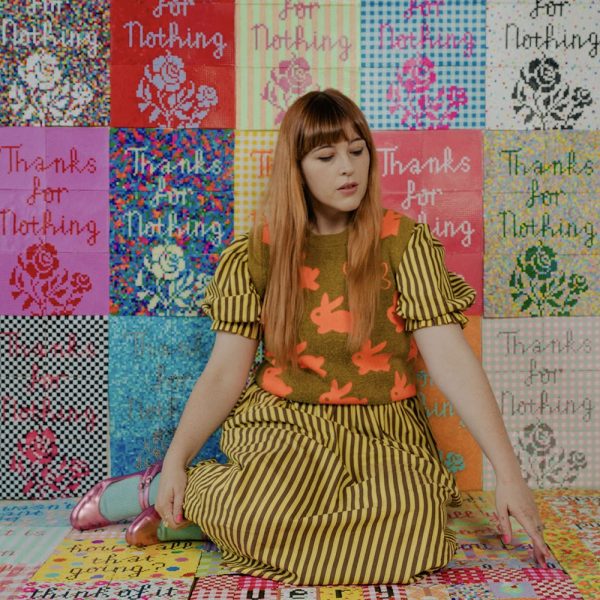'Thanks for Nothing is a body of work born out of a recent personal experience of recurrent pregnancy loss over a 12-month period. Created with over half a million de-stashed and thrifted melty beads, these works capture fragments of conversations, clinical language, and my own reflections. The process of obsessive, repetitive creation became both a refuge and a mode of healing, allowing me to confront and process my grief and transform it into something tangible.
Each piece in the collection reflects aspects of my journey, including the often unspoken phrases, platitudes, and scripted responses I received—or even repeated myself—in the isolating aftermath of my losses. In this work, the act of creation became a way to process that isolation, understand my trauma, and give physical form to my emotions that would otherwise remain unspoken or forgotten.
Melty beads carry deep personal significance, symbolising a pivotal moment in my experience while offering a meditative and repetitive process that facilitated healing, reflection and catharsis. Inspired by the domestic motifs of vintage quilts, patchworks, tea towels, and cross-stitches, panels are linked with jump rings, connecting memories in a way that mirrors the interwoven nature of loss, grief, and isolation. Using the bag as a form reflects a recurring desire to place my emotions and experiences somewhere else while I took the time to recover. The bags serve as an attempt to physically contain and hold the weight of these emotions, creating a delicate space where complex and conflicting feelings can reside.
Through this process, I have sought to own and share my experiences and aim to transform the strange and invisible feelings of loss into something I could hold.' — Rachel Burke
—
The exhibition catalogue is available here
—
EXHIBITION DATES
Opening night event Saturday 1 February 6 – 8 pm
Artist talk Saturday 1 February 5.30 pm
Up late closing event Thursday 13 February 6 – 8 pm
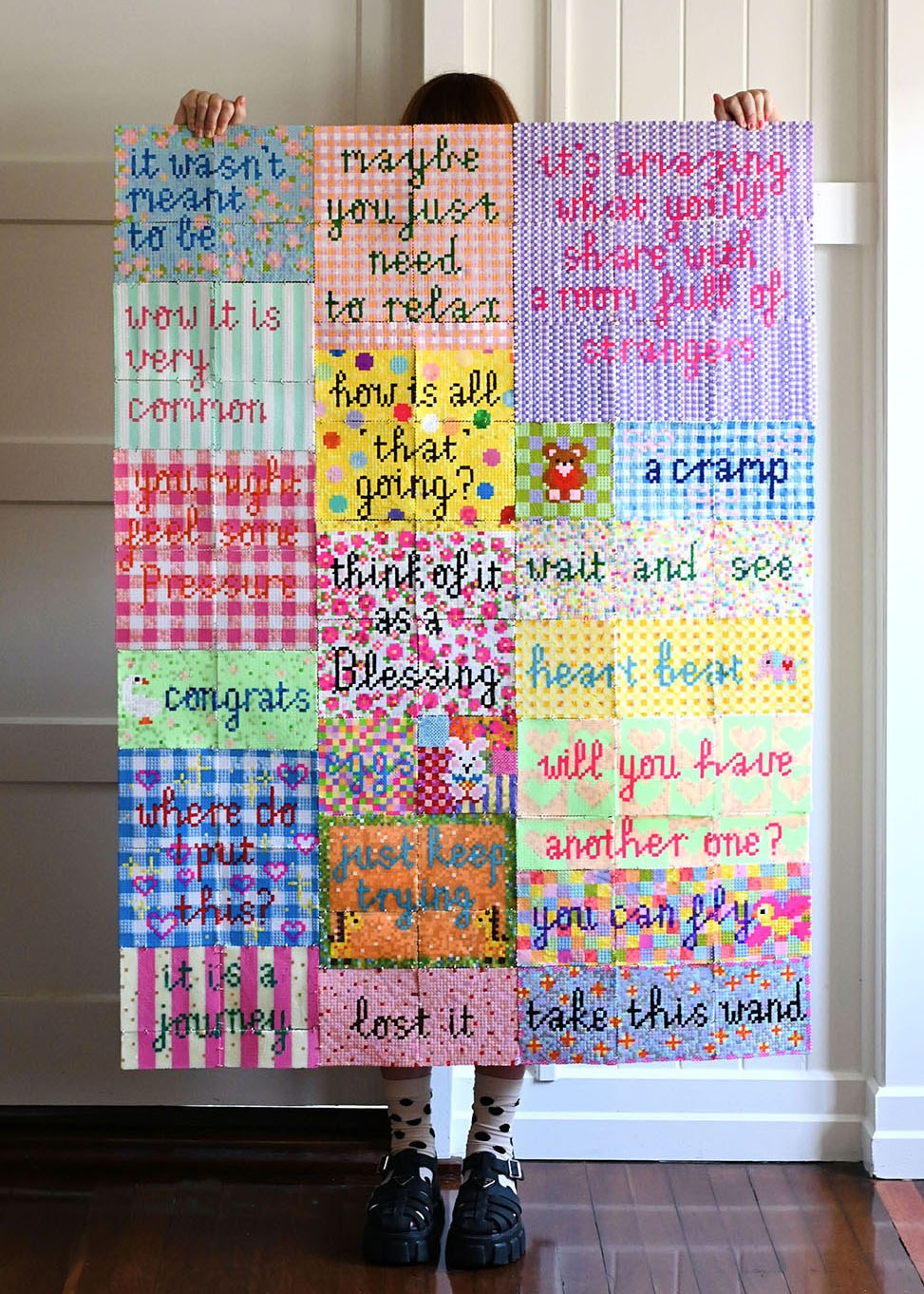
Chats 2025
Melty beads
140 x 99 cm
$7800
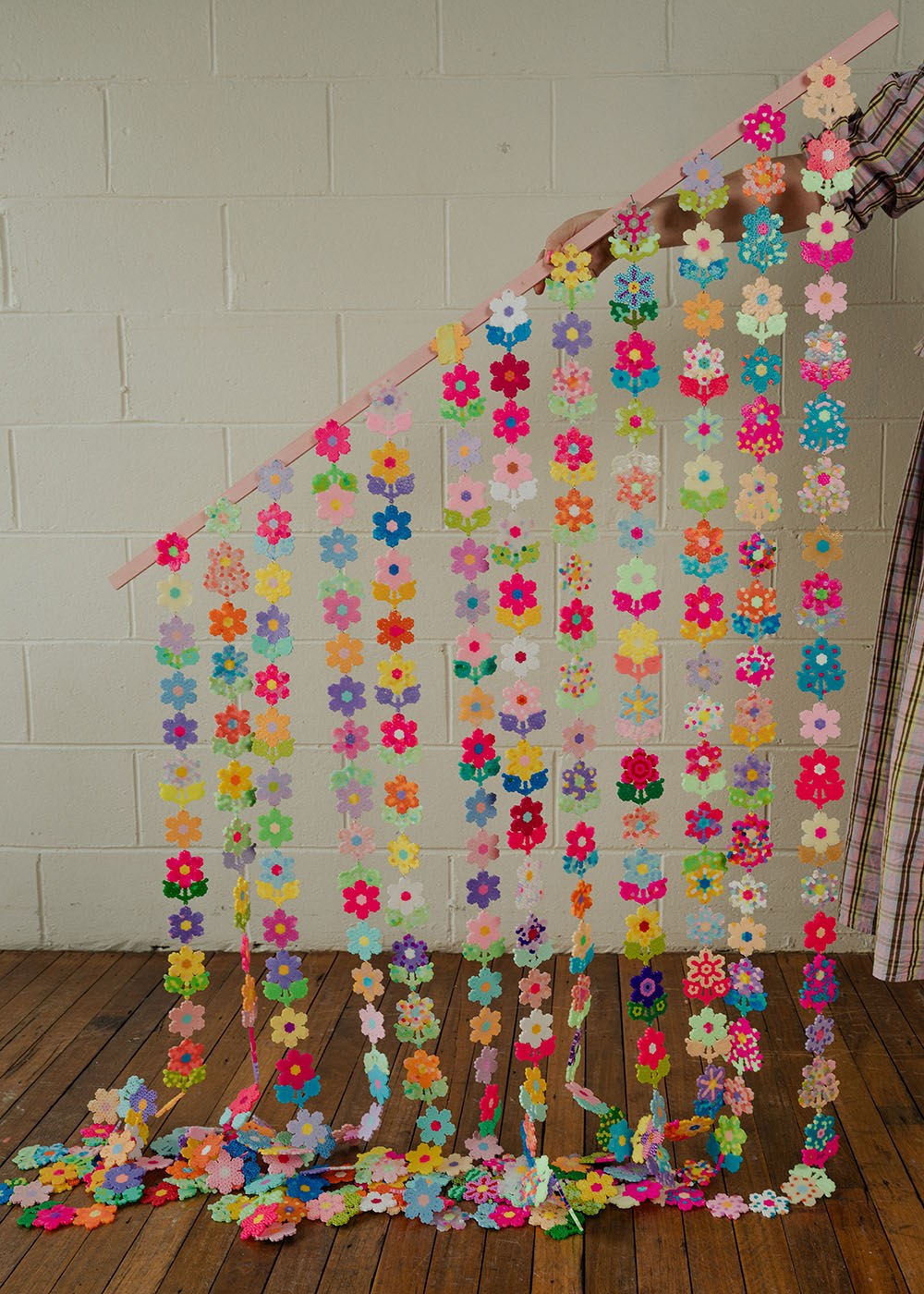
Daisy Veil 2024
Melty beads
150 x 119 cm (full set), 150 x 5 cm each strand
$3360 (full set of 12 strands), $280 per strand length
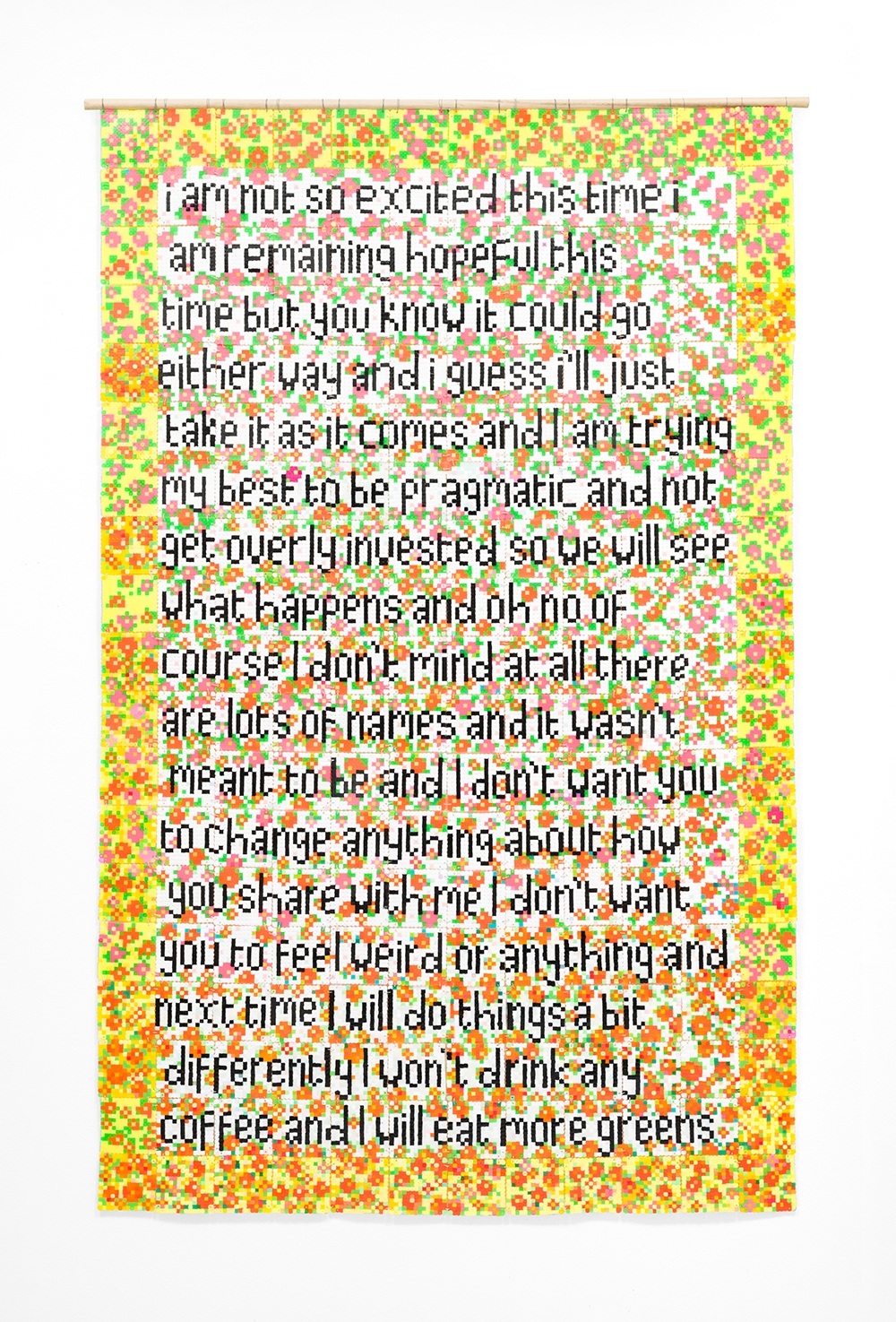
Script 2024
Melty beads
133 x 84 cm
$7500
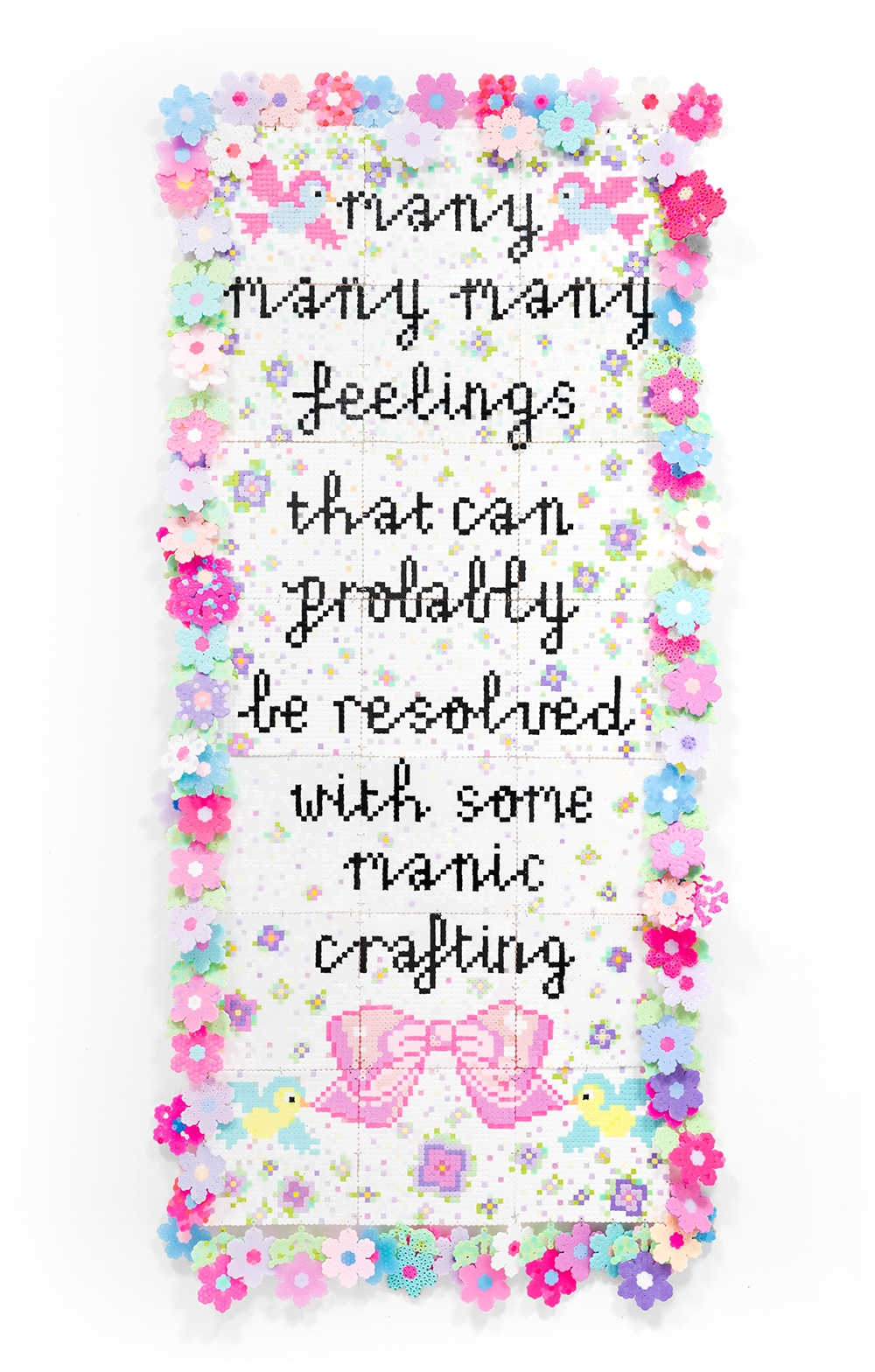
Many Many Feelings 2024
Melty beads
110 x 56 cm
$2800

Very Anxious Ready For Snacks 2024
Melty beads
76.5 x 62.5 cm
$1800
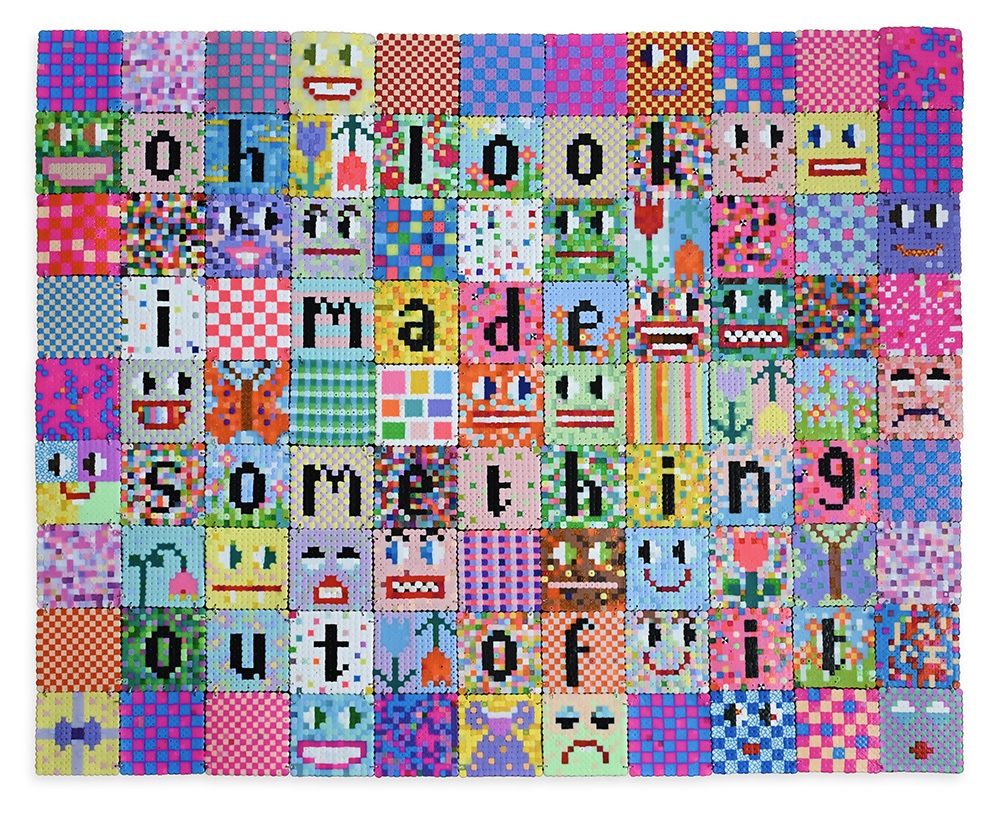
I Made Something 2025
Melty beads
75 x 75 cm
$1800
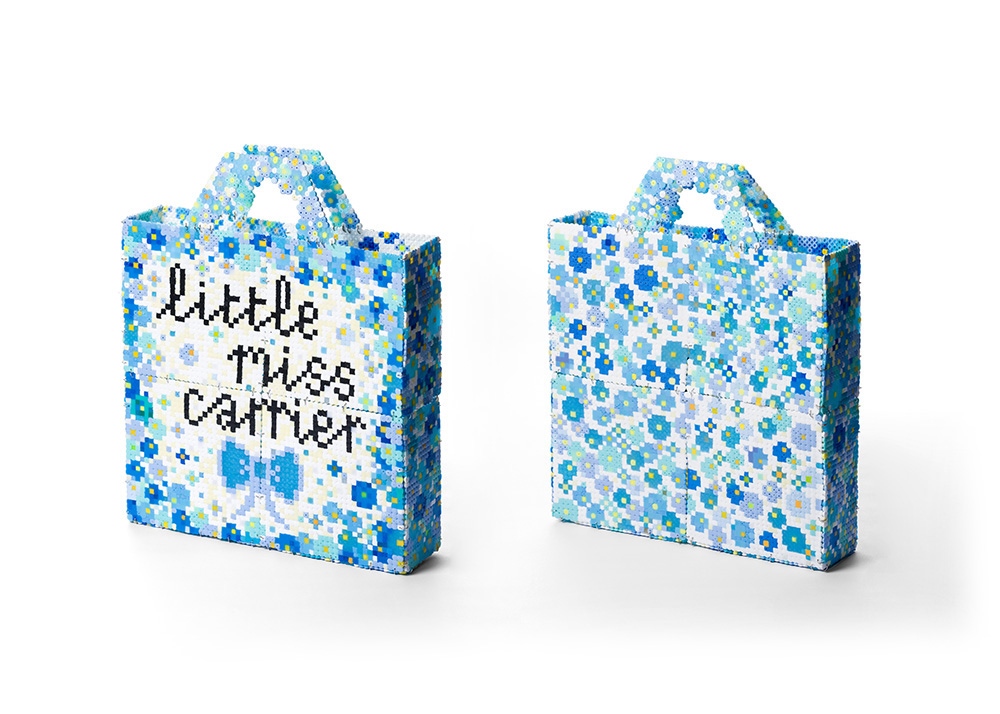
Little Miss Carrier bag 2024
Melty beads
34.5 x 28.5 cm
$720
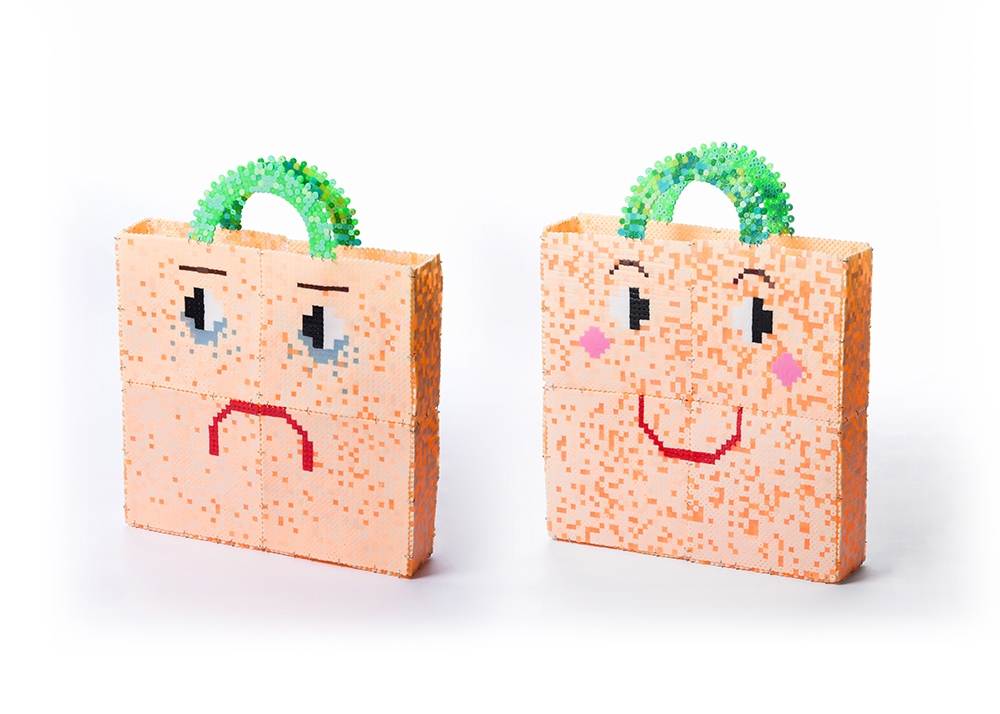
Happy Sad Bag 2024
Melty beads
35.6 x 29 cm
$720
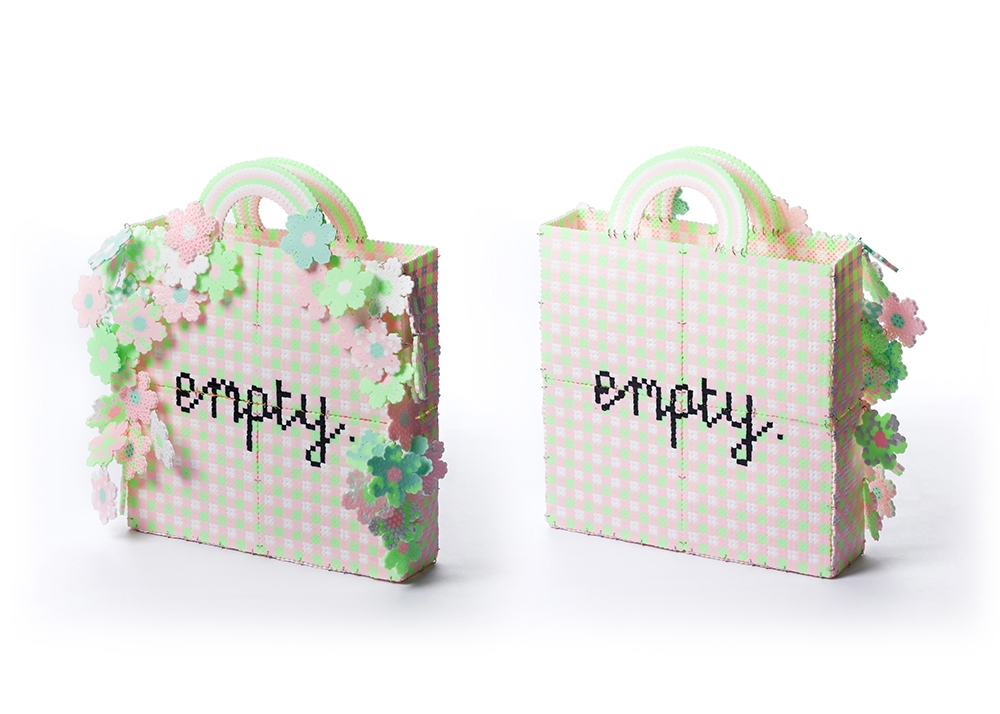
Empty Bag 2024
Melty beads
35.5 x 35 cm
$720
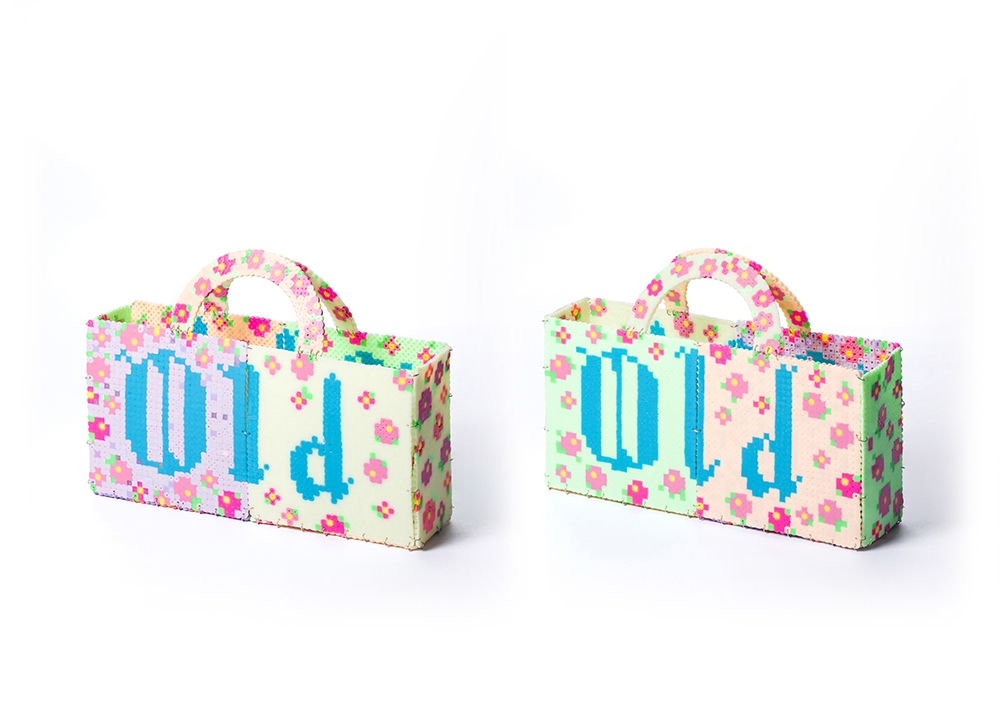
Old Bag 2024
Melty beads
20.5 x 28.5 cm
$450
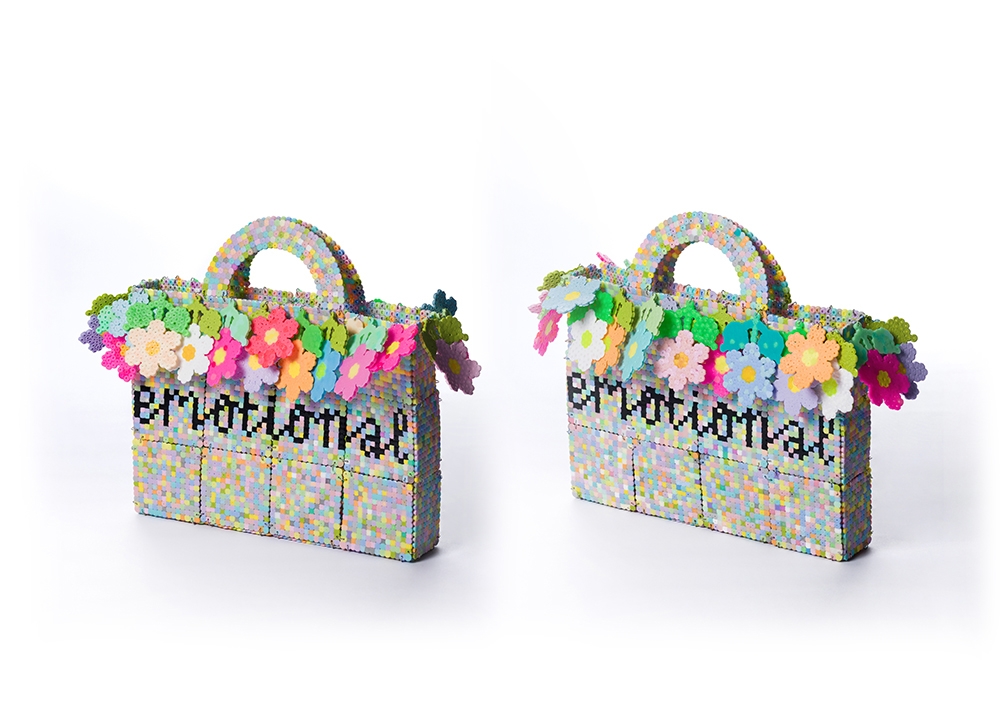 Sold
Sold
Emotional Baggage 2024
Melty beads
27.5 x 28 cm
$580 Sold
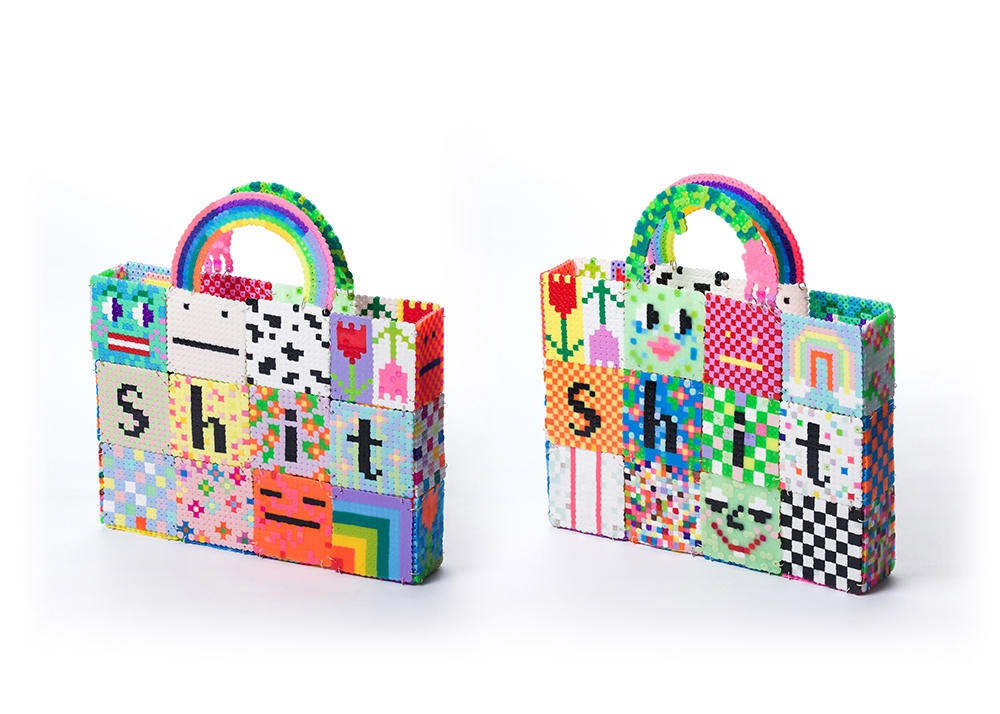 Sold
Sold
Shit Bag 2024
Melty beads
29 x 29 cm
$550 Sold
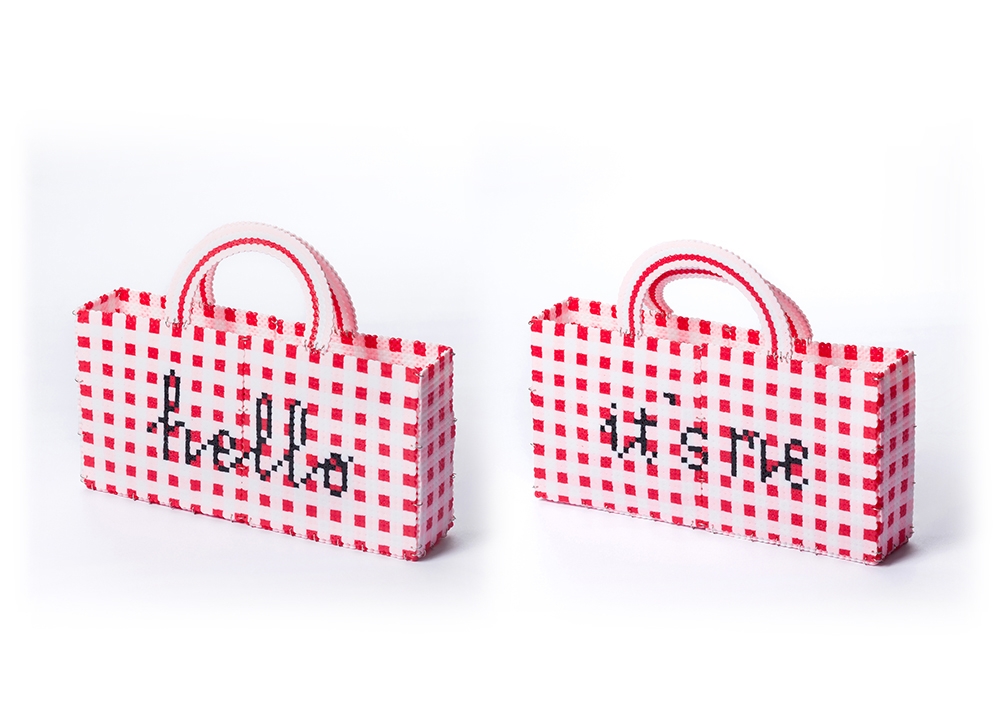 Sold
Sold
Hello Bag 2024
Melty beads
28.5 x 29 cm
$450 Sold
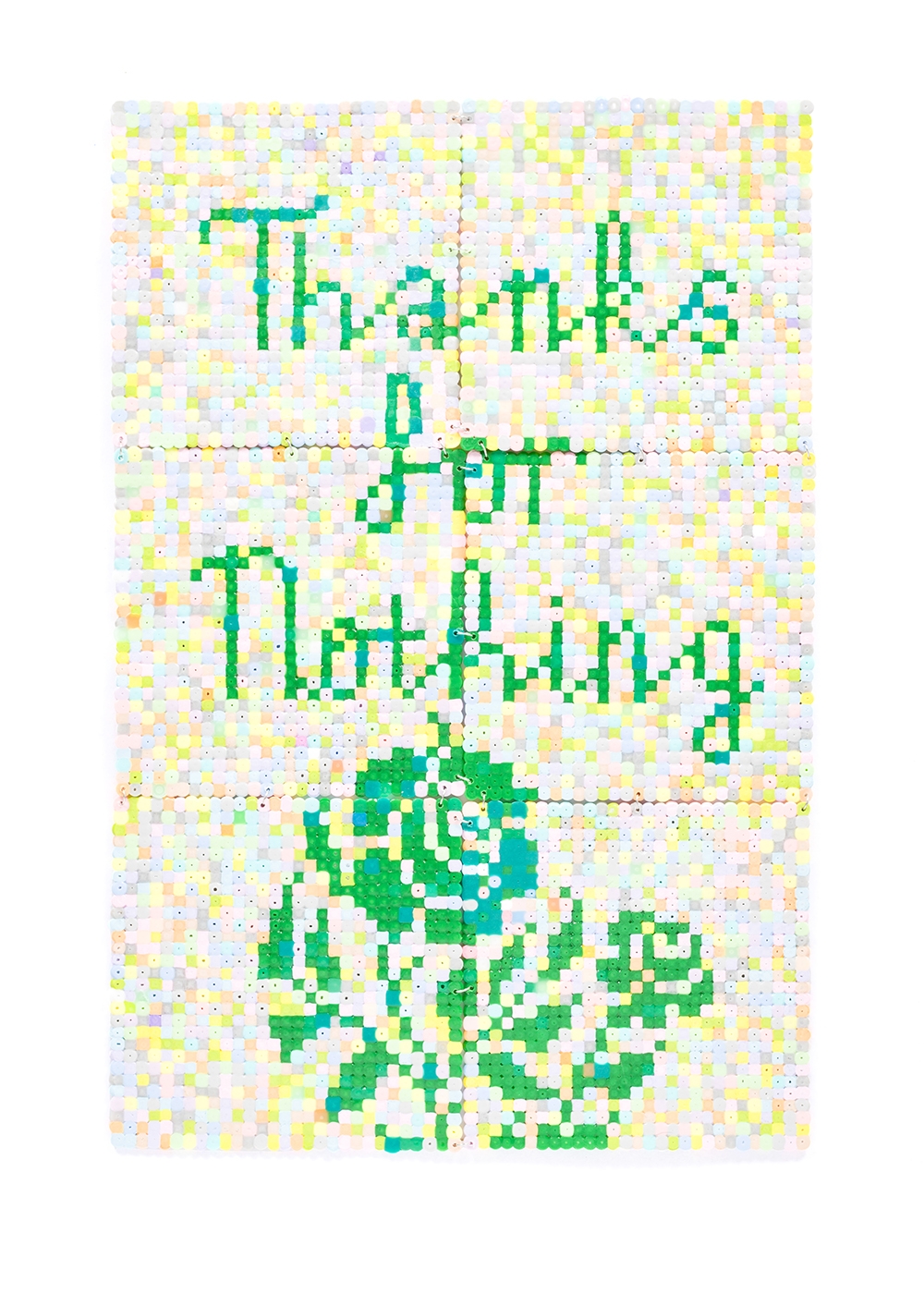
Thanks for Nothing, speckle with green 2024
Melty beads
43.5 x 28.5 cm
$680
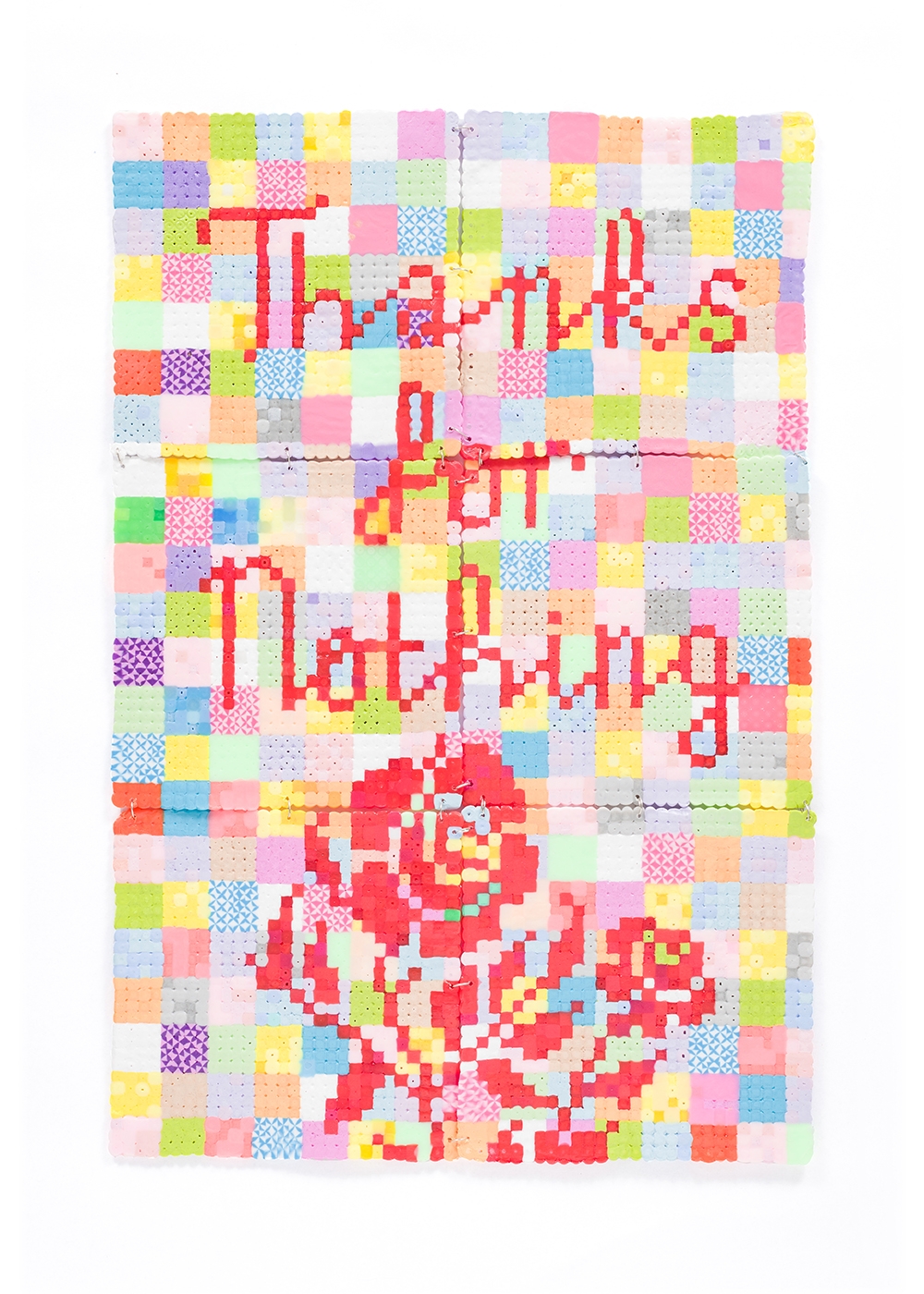
Thanks for Nothing, rainbow patchwork with red 2024
Melty beads
43.5 x 28.5 cm
$680
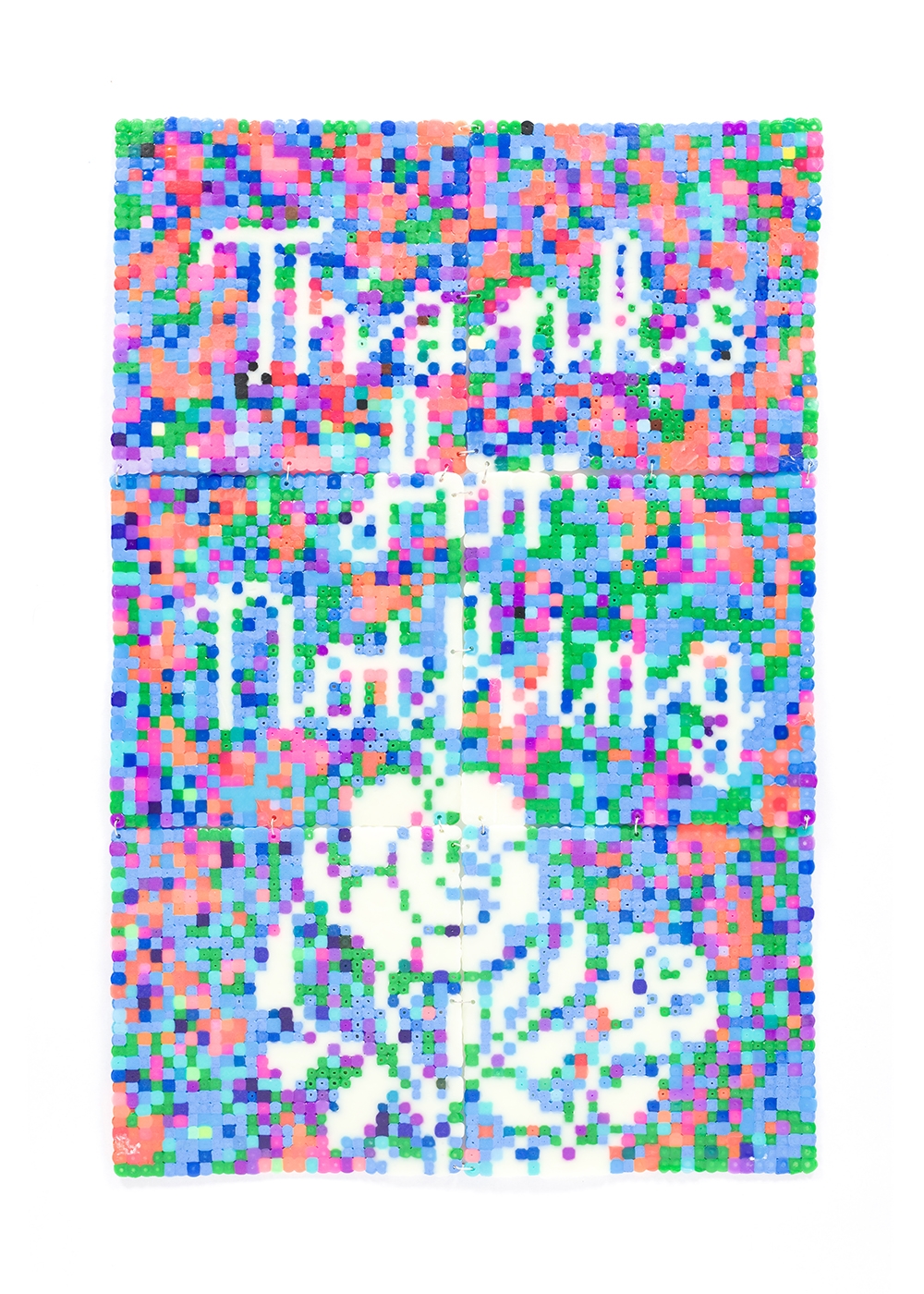 Sold
Sold
Thanks for Nothing, blue speckle with lemon 2024
Melty beads
43.5 x 28.5 cm
$680 Sold
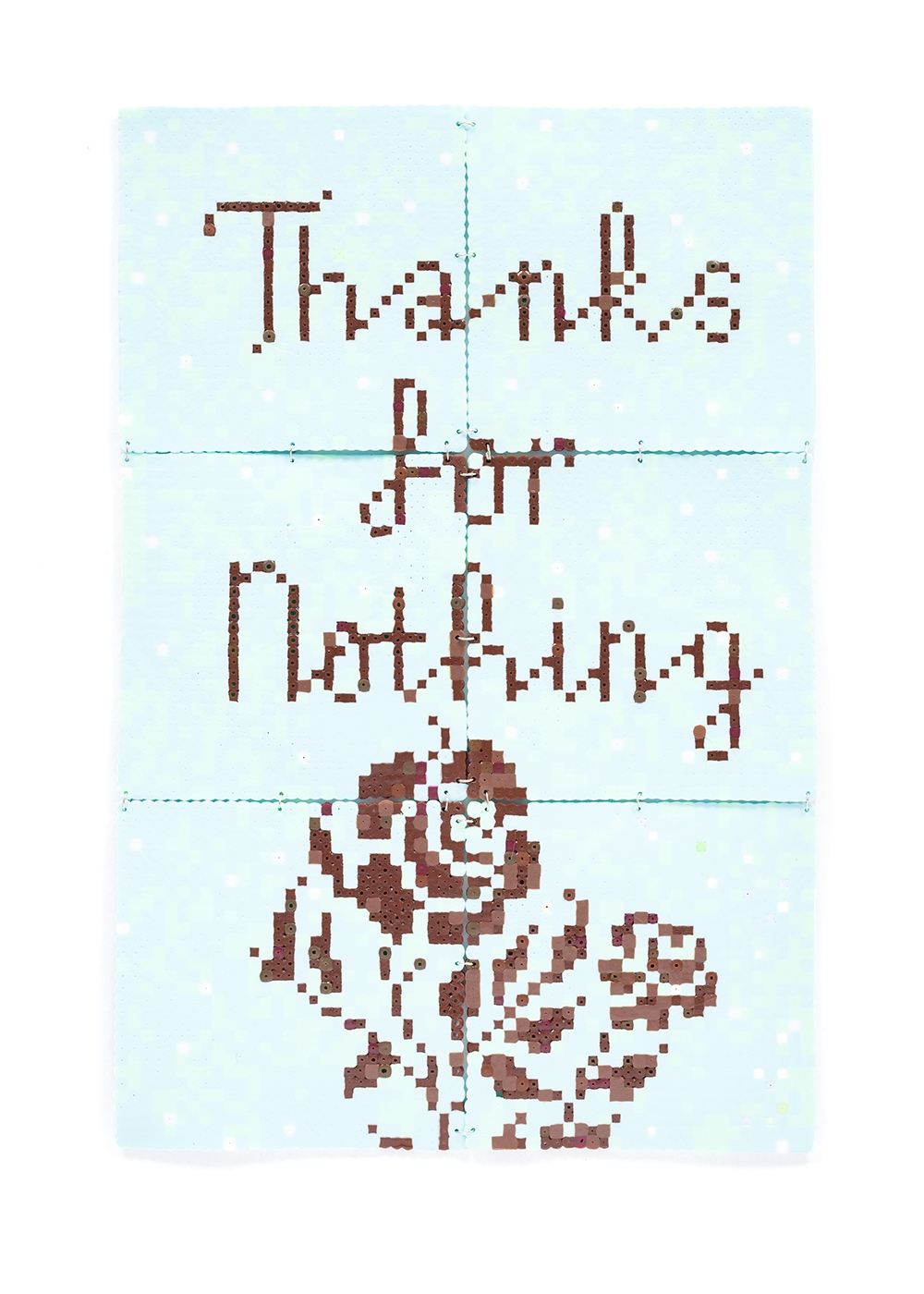 Sold
Sold
Thanks for Nothing, bright blue with brown 2024
Melty beads
43.5 x 28.5 cm
$680 Sold
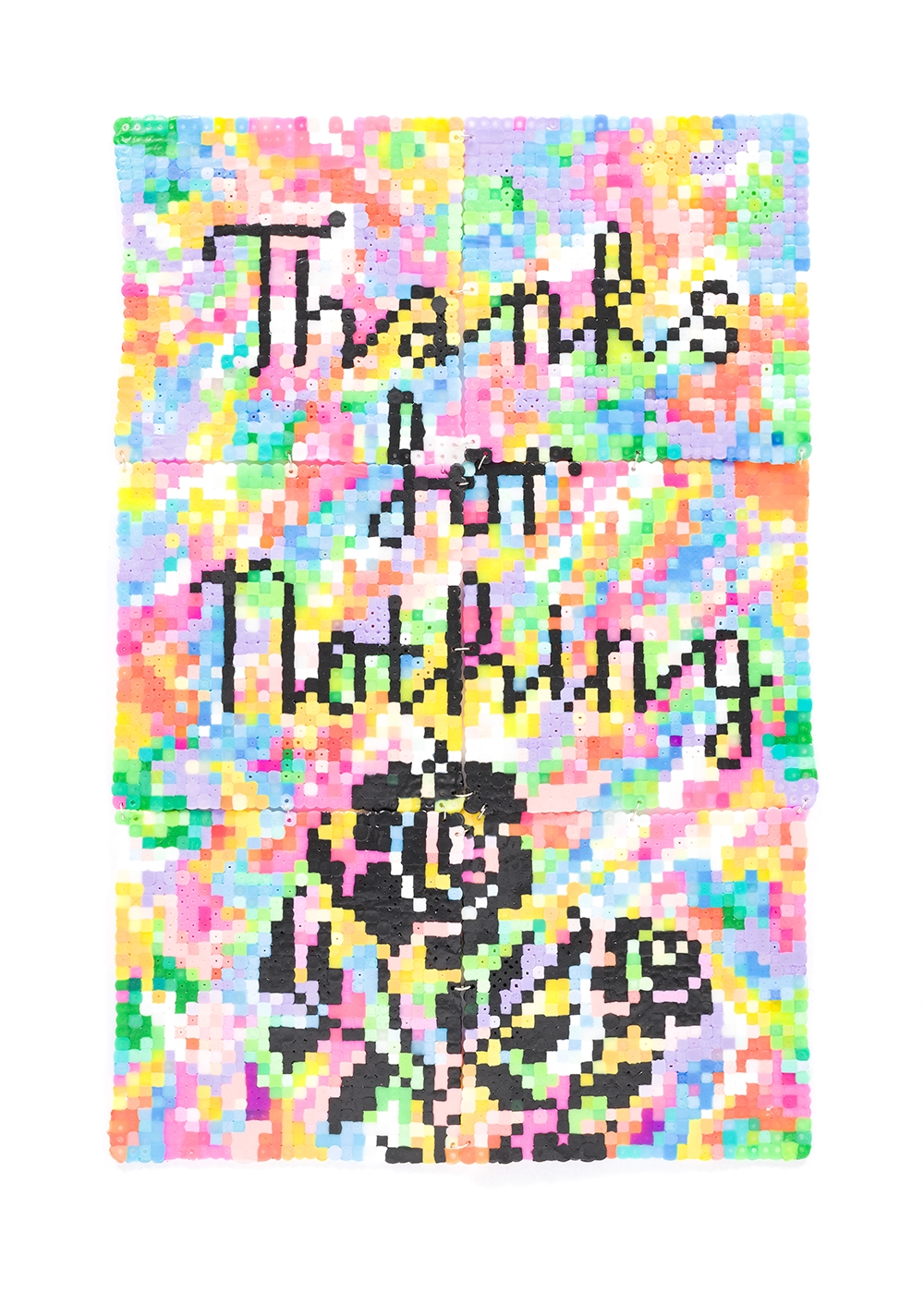
Thanks for Nothing, rainbow swirl with black 2024
Melty beads
43.5 x 28.5 cm
$680
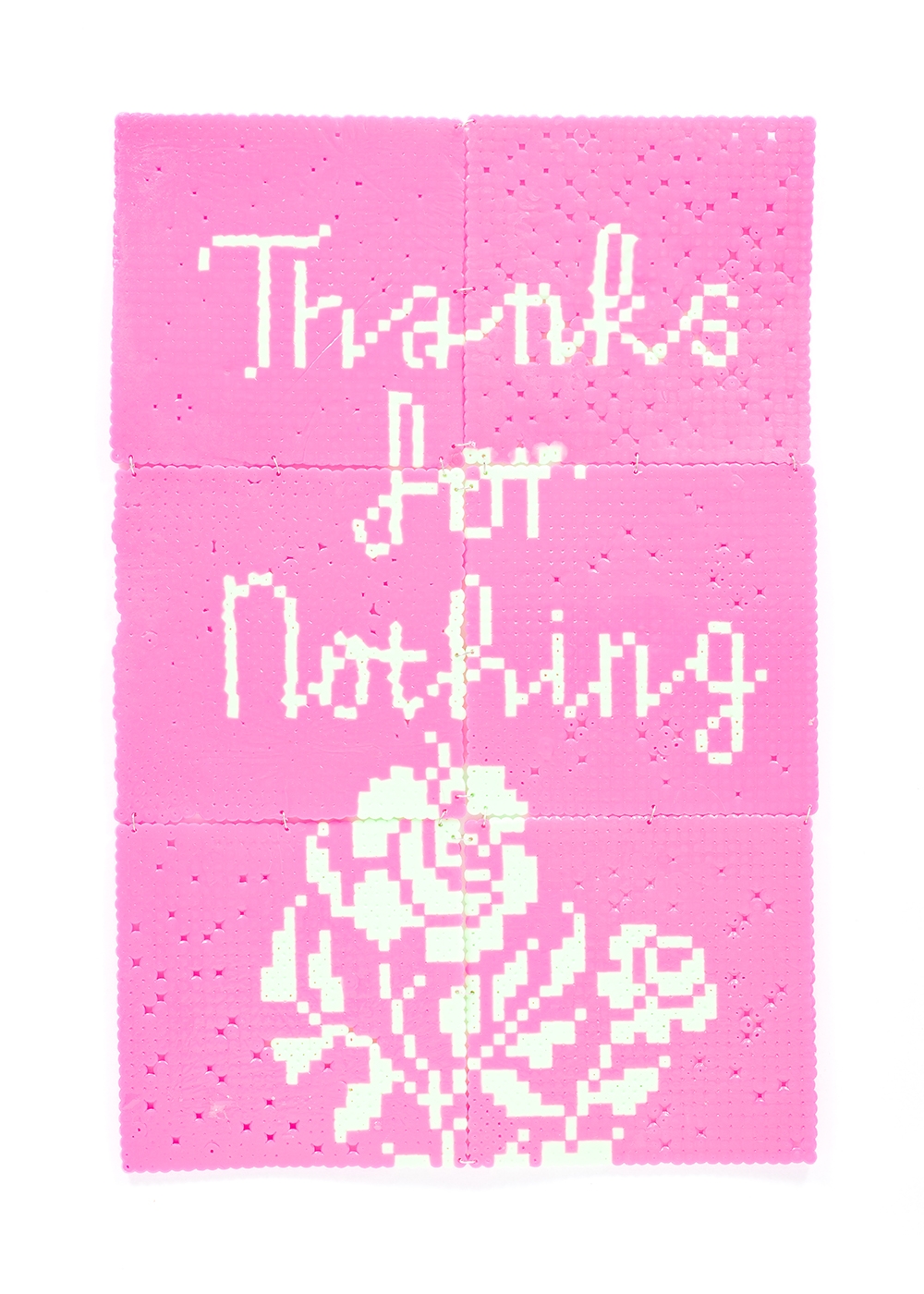
Thanks for Nothing, hot pink with pale green 2024
Melty beads
43.5 x 28.5 cm
$680
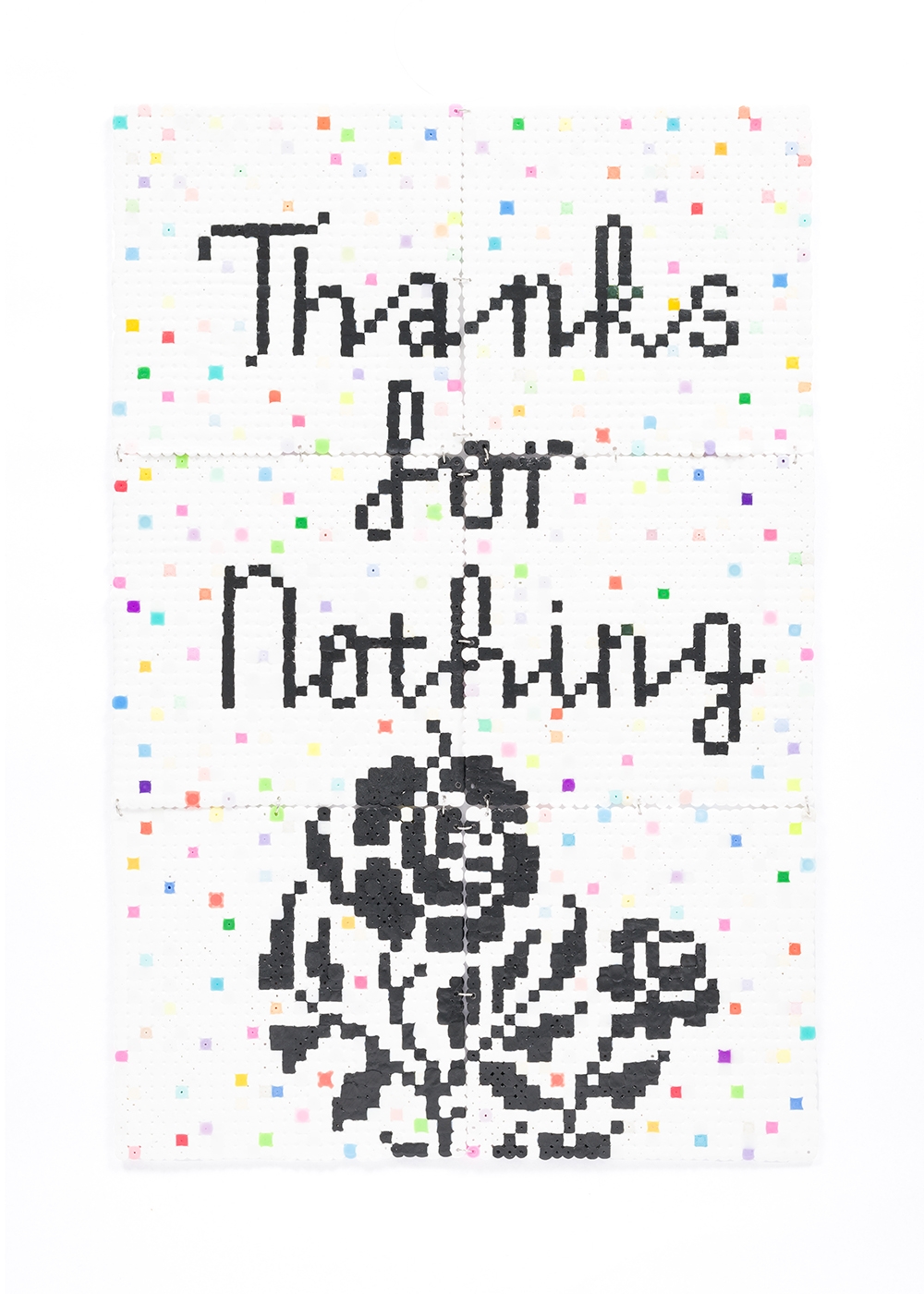
Thanks for Nothing, sprinkles with black 2024
Melty beads
43.5 x 28.5 cm
$680
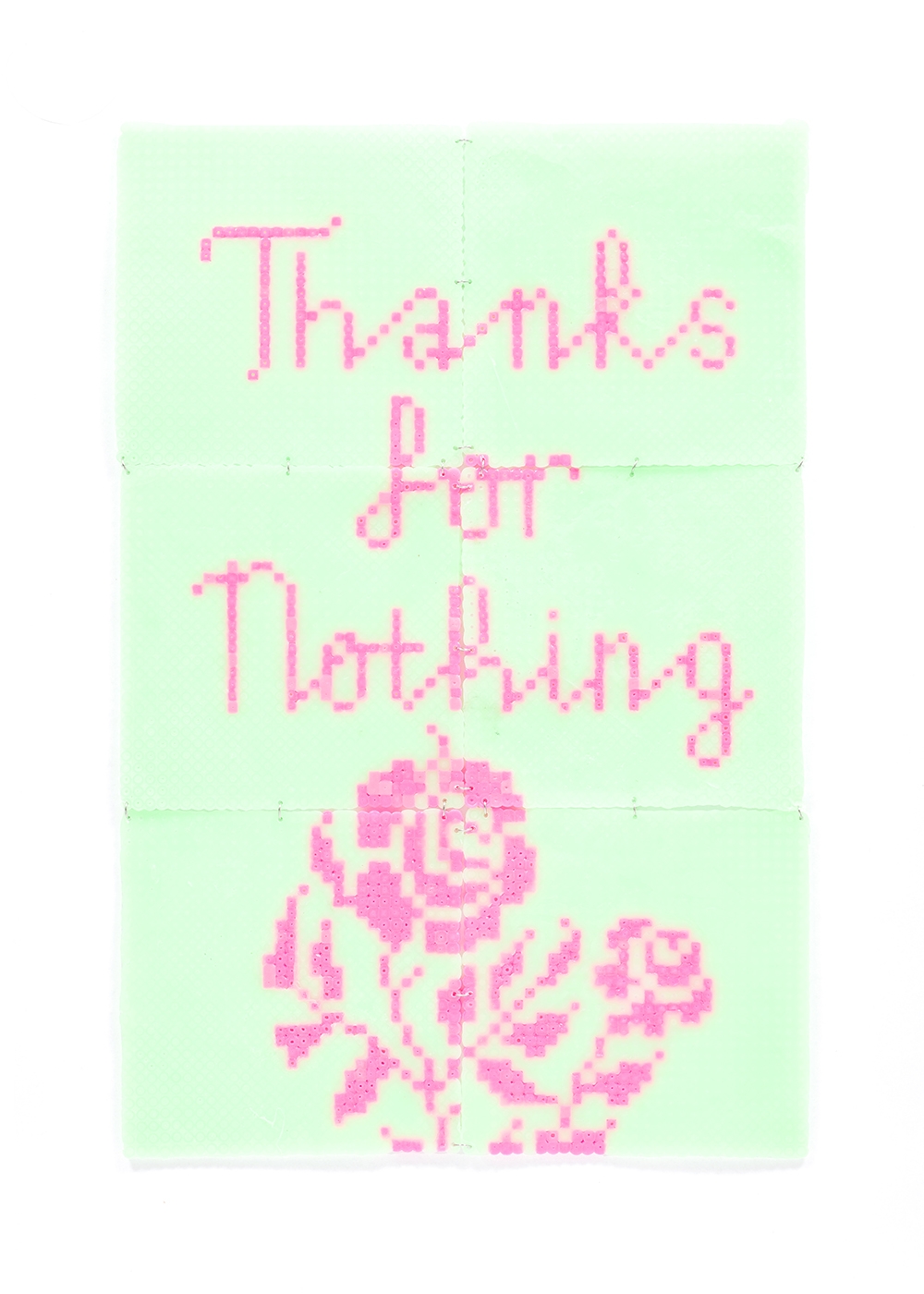
Thanks for Nothing, pale green with hot pink 2024
Melty beads
43.5 x 28.5 cm
$680
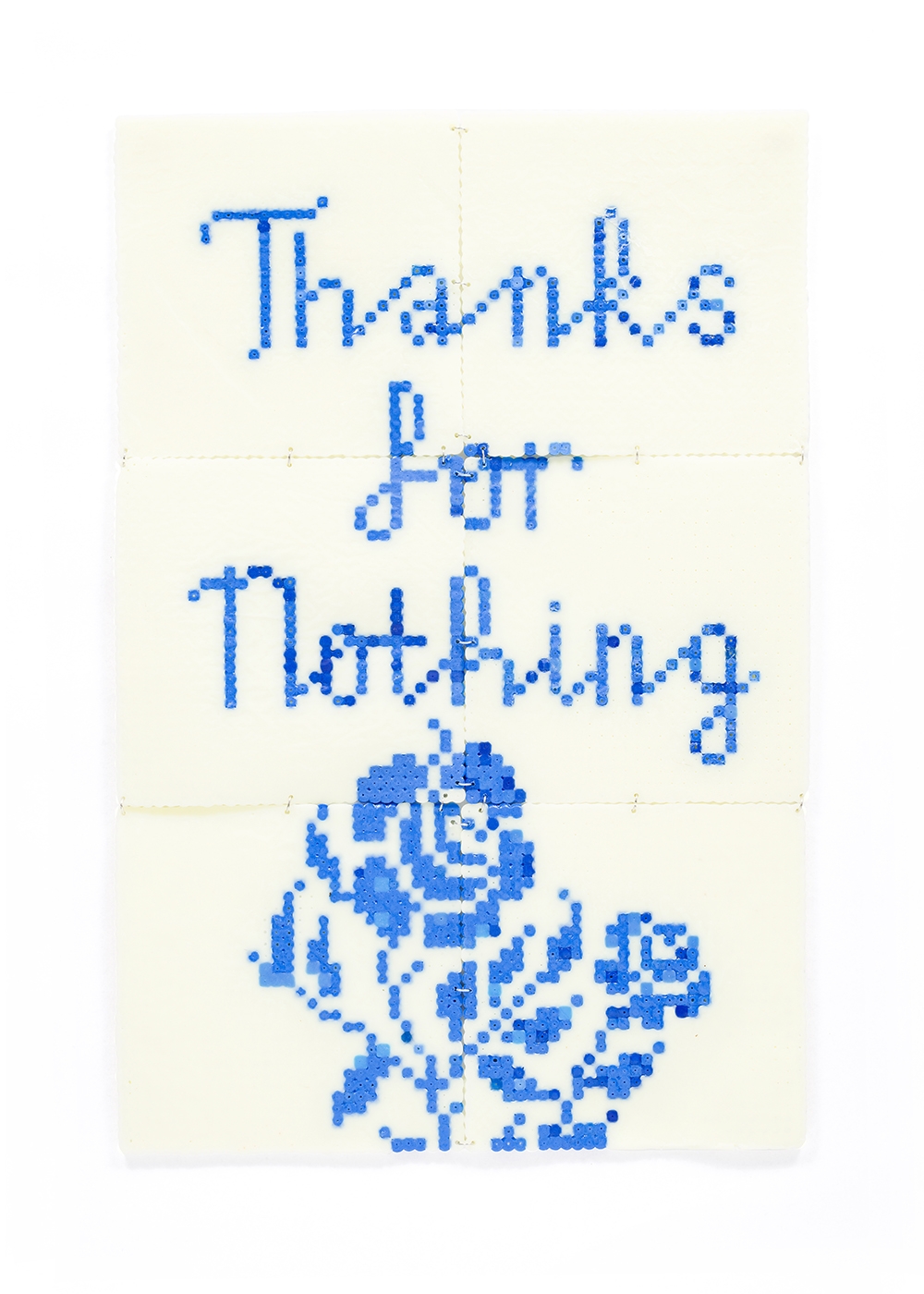 Sold
Sold
Thanks for Nothing, lemon with dark blue 2024
Melty beads
43.5 x 28.5 cm
$680 Sold
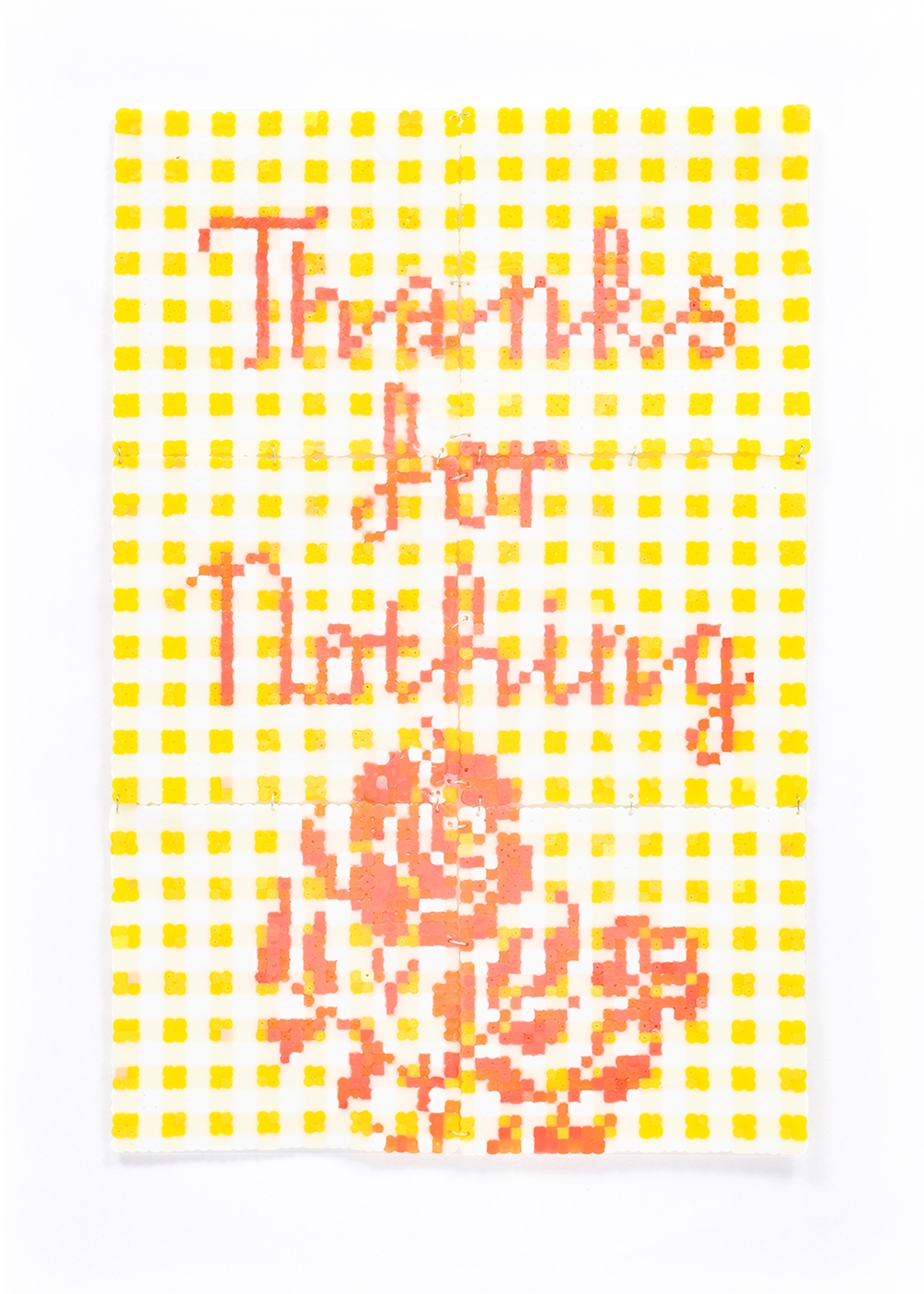
Thanks for Nothing, lemon check with orange 2024
Melty beads
43.5 x 28.5 cm
$680
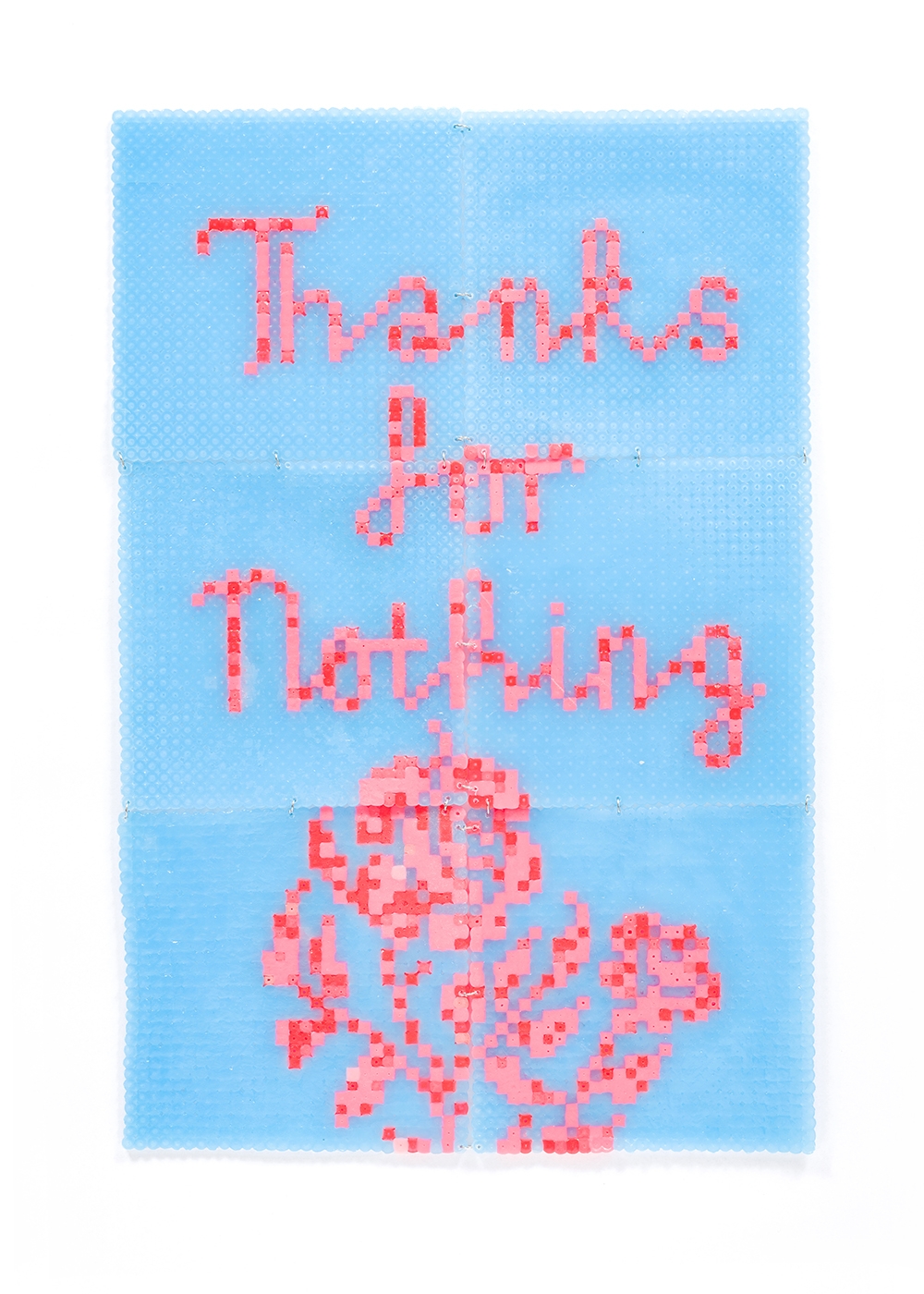 Sold
Sold
Thanks for Nothing, blue with coral 2024
Melty beads
43.5 x 28.5 cm
$680 Sold
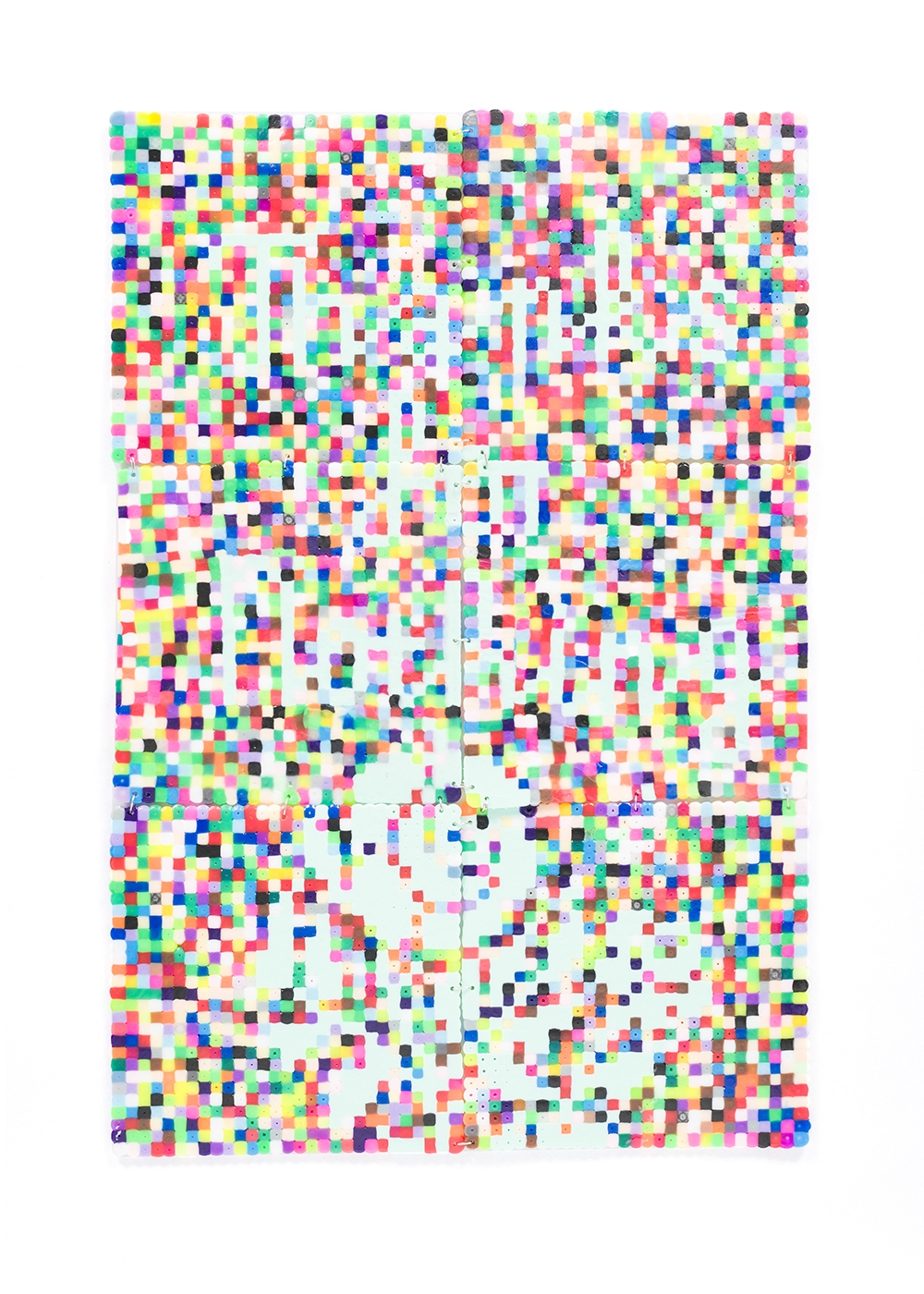
Thanks for Nothing, rainbow speckle with pale blue 2024
Melty beads
43.5 x 28.5 cm
$680
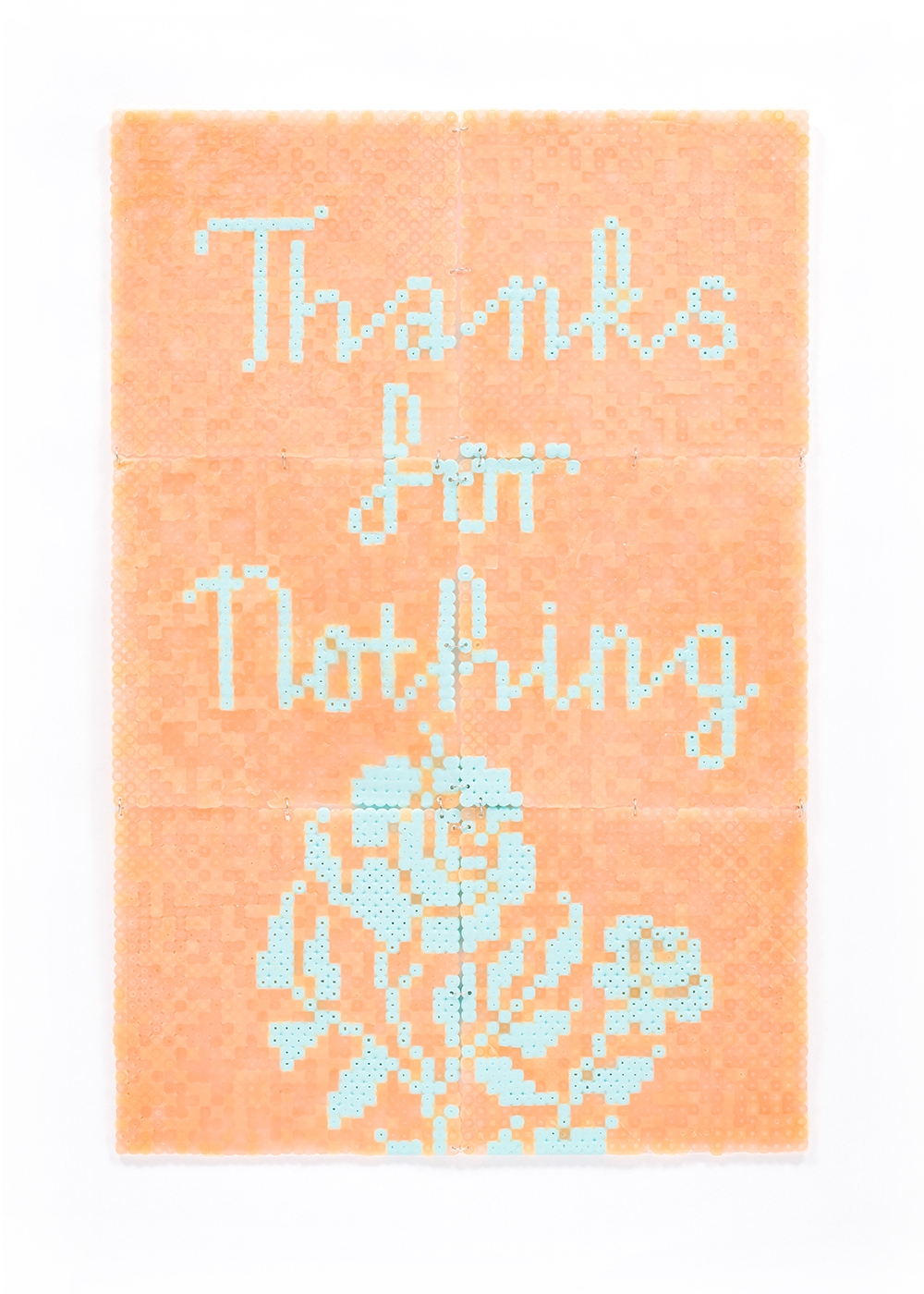
Thanks for Nothing, orange with aqua 2024
Melty beads
43.5 x 28.5 cm
$680
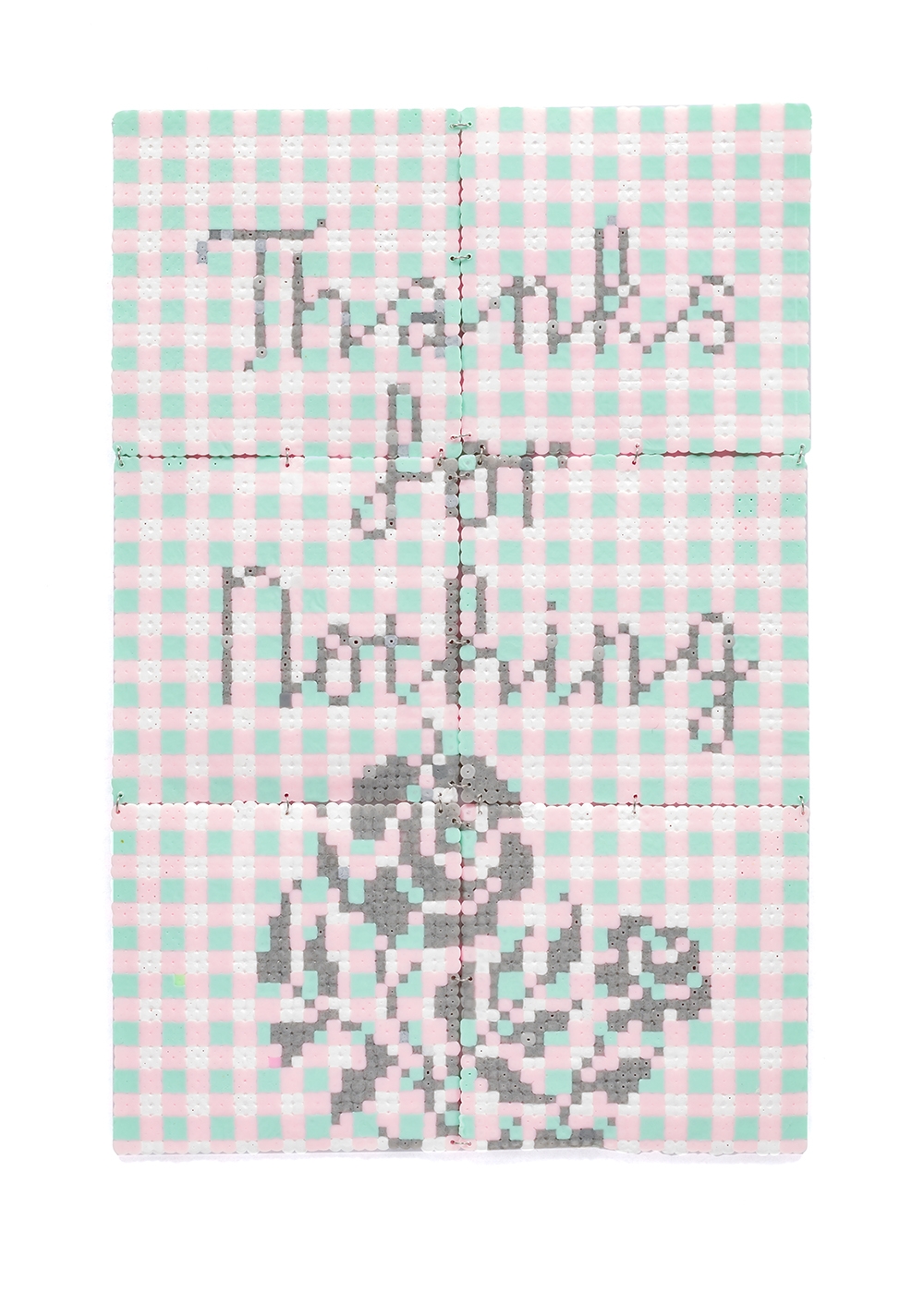 Sold
Sold
Thanks for Nothing, pink and mint check with grey 2024
Melty beads
43.5 x 28.5 cm
$680 Sold
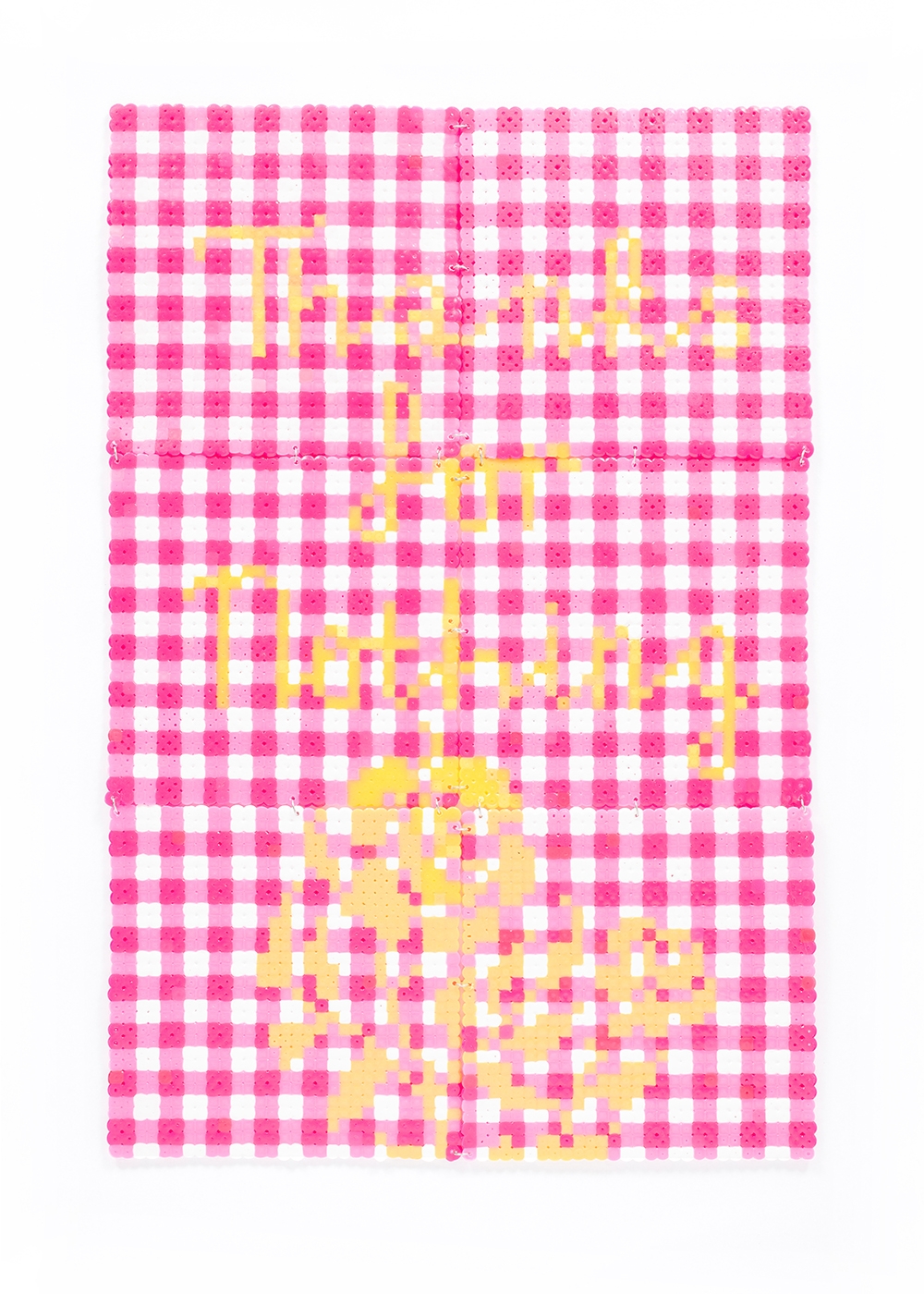
Thanks for Nothing, hot pink check with yellow 2024
Melty beads
43.5 x 28.5 cm
$680
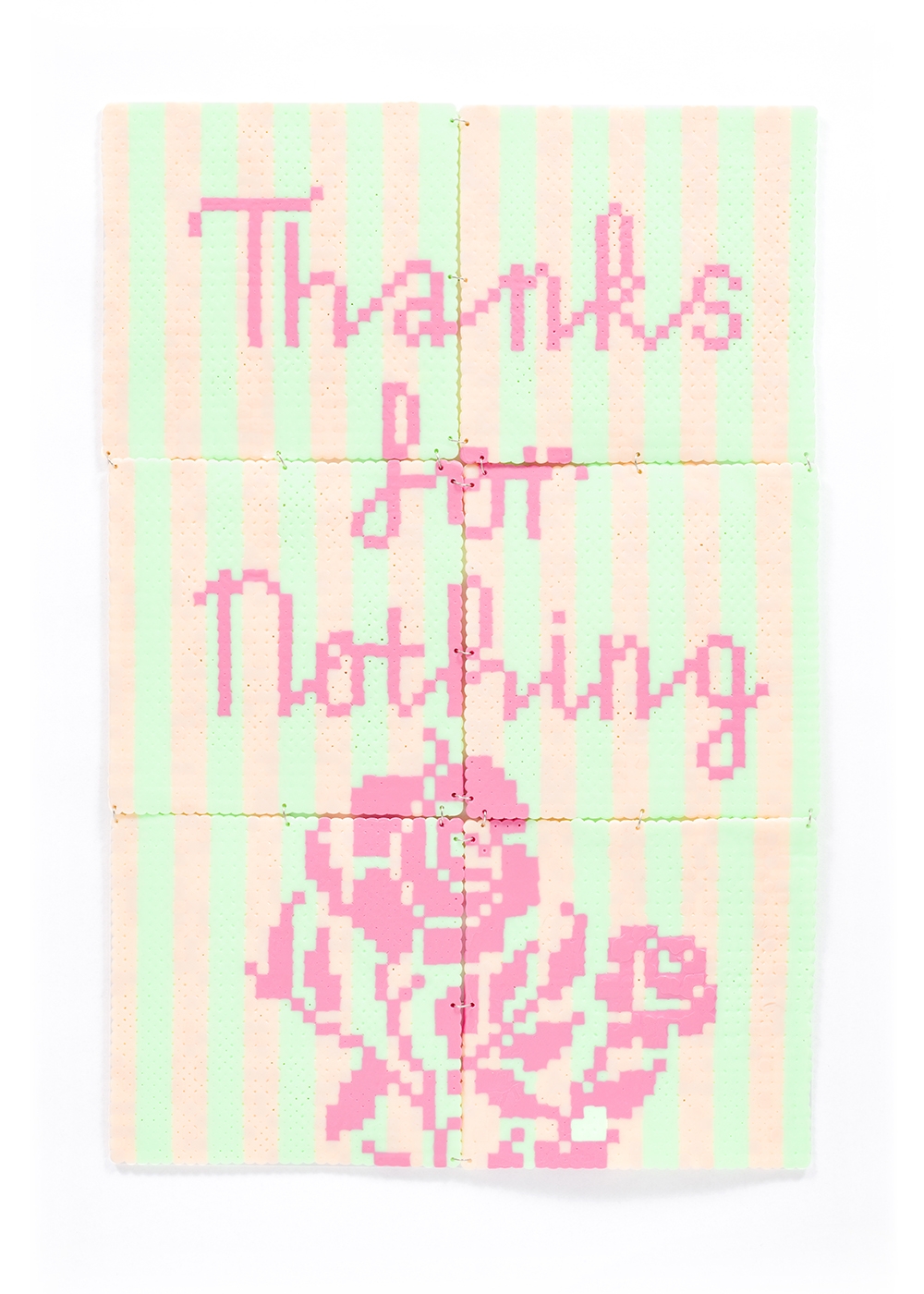
Thanks for Nothing, peach and mint stripe 2024
Melty beads
43.5 x 28.5 cm
$680
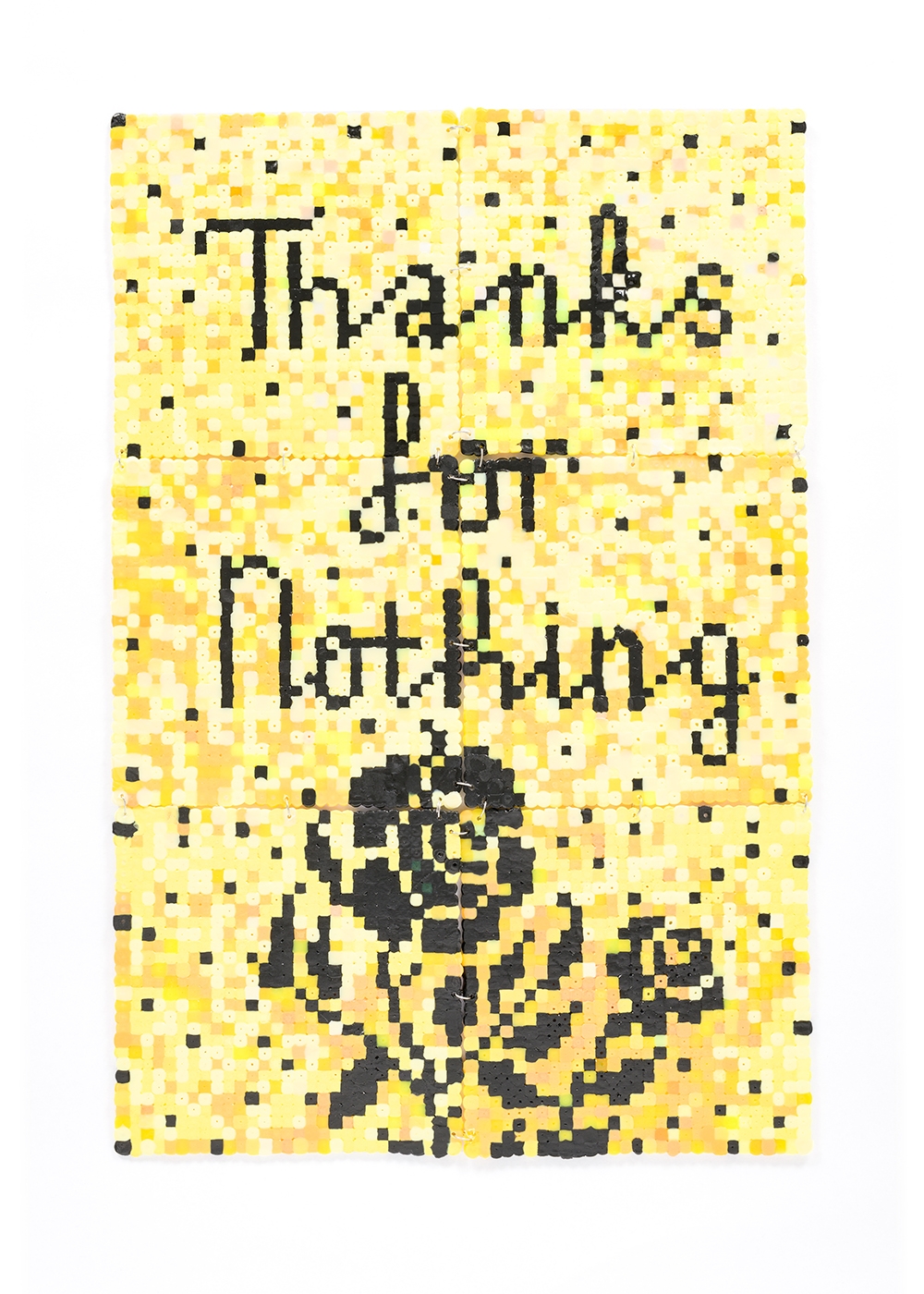
Thanks for Nothing, yellow with black 2024
Melty beads
43.5 x 28.5 cm
$680
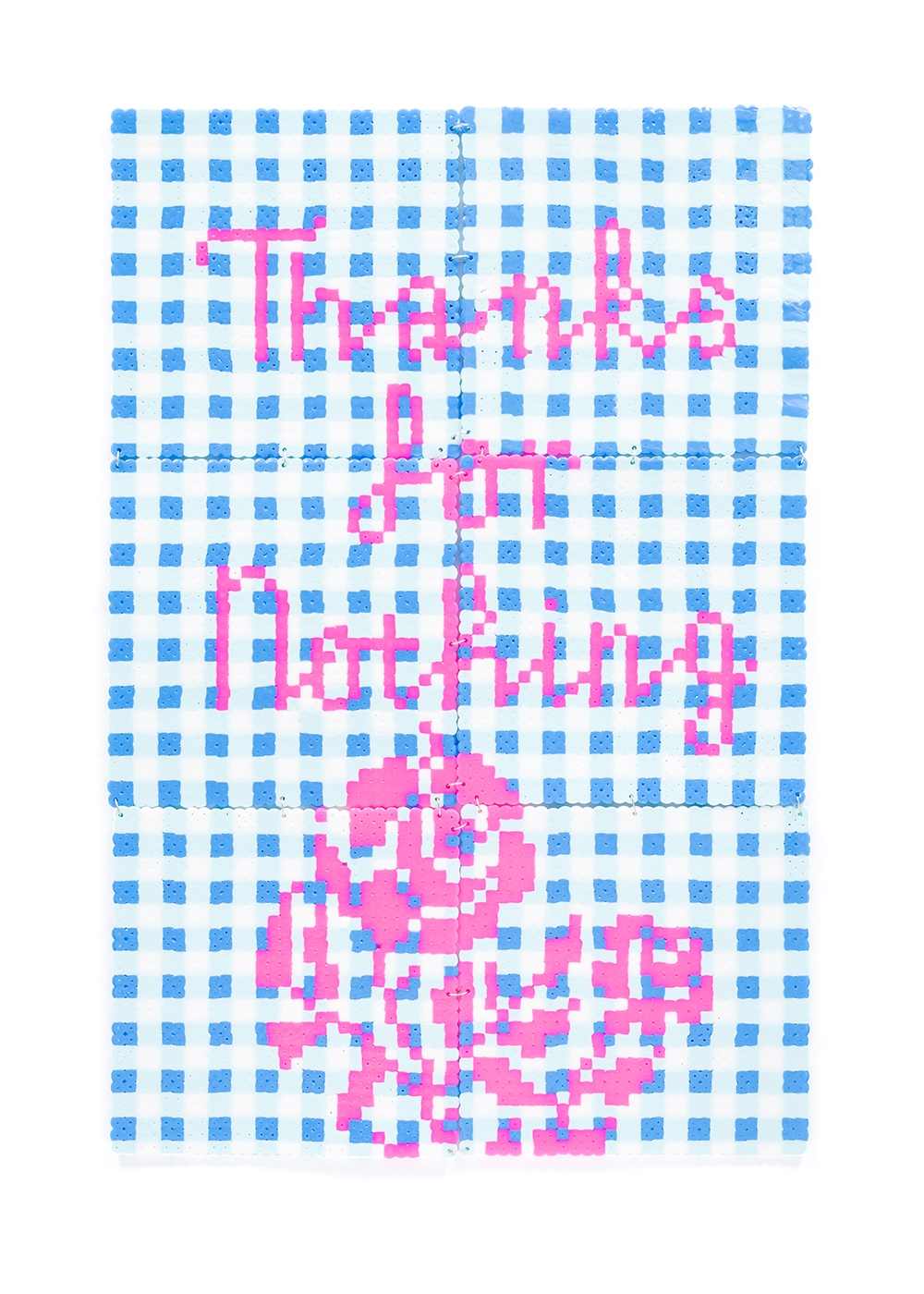
Thanks for Nothing, blue check with hot pink 2024
Melty beads
43.5 x 28.5 cm
$680
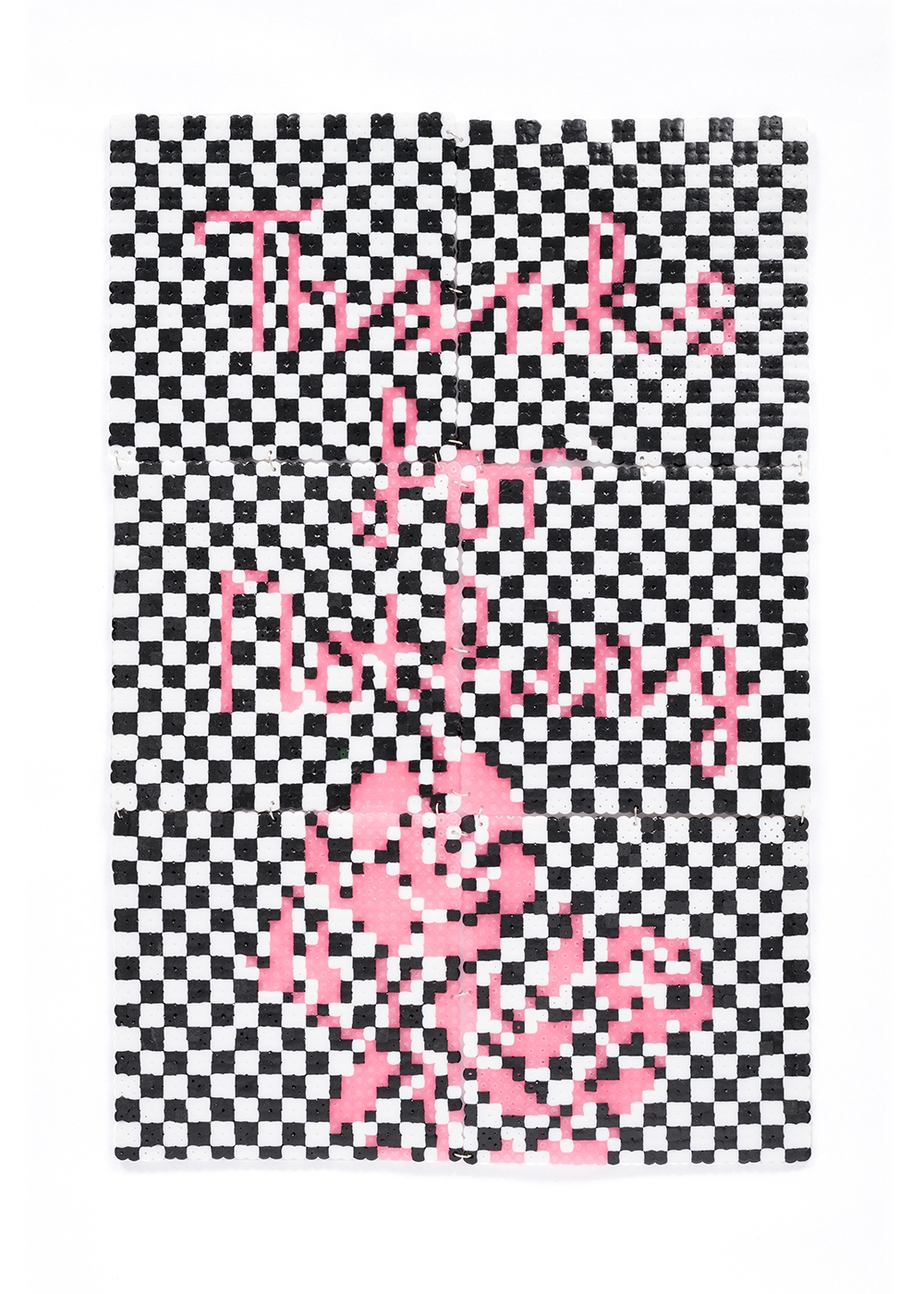
Thanks for Nothing, black check with coral 2024
Melty beads
43.5 x 28.5 cm
$680
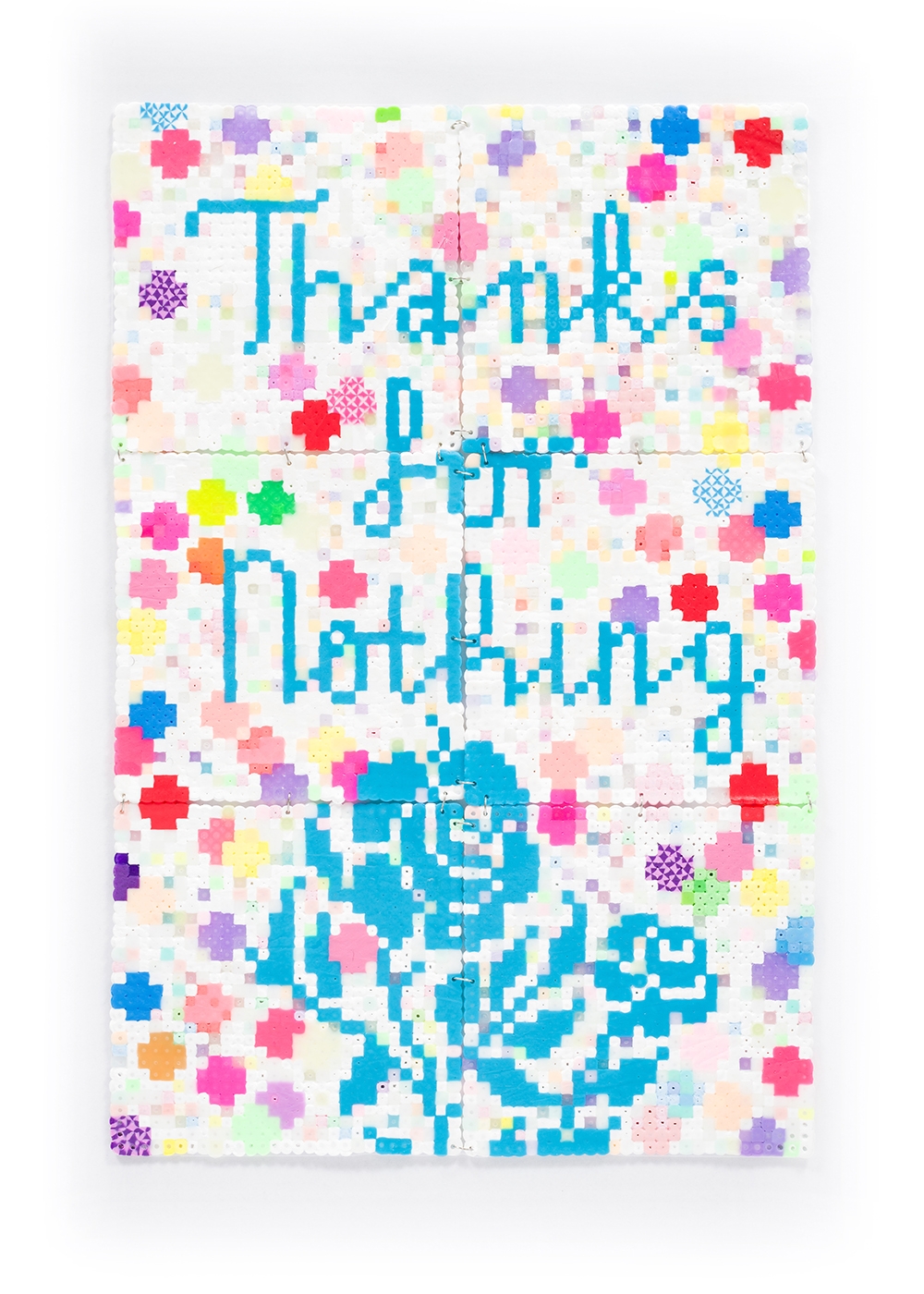 Sold
Sold
Thanks for Nothing, rainbow confetti with blue 2024
Melty beads
43.5 x 28.5 cm
$680 Sold
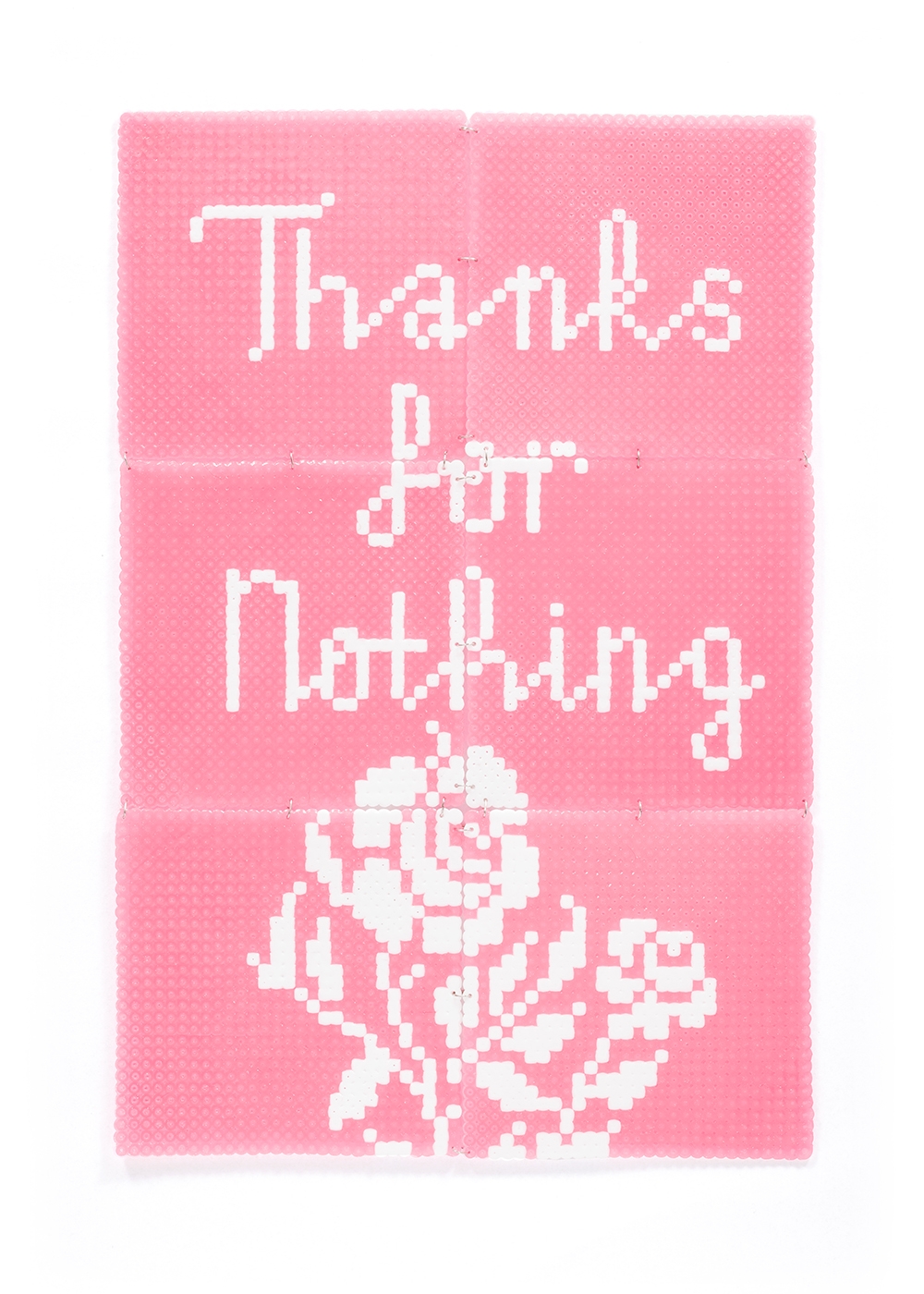
Thanks for Nothing, pink with white 2024
Melty beads
43.5 x 28.5 cm
$680
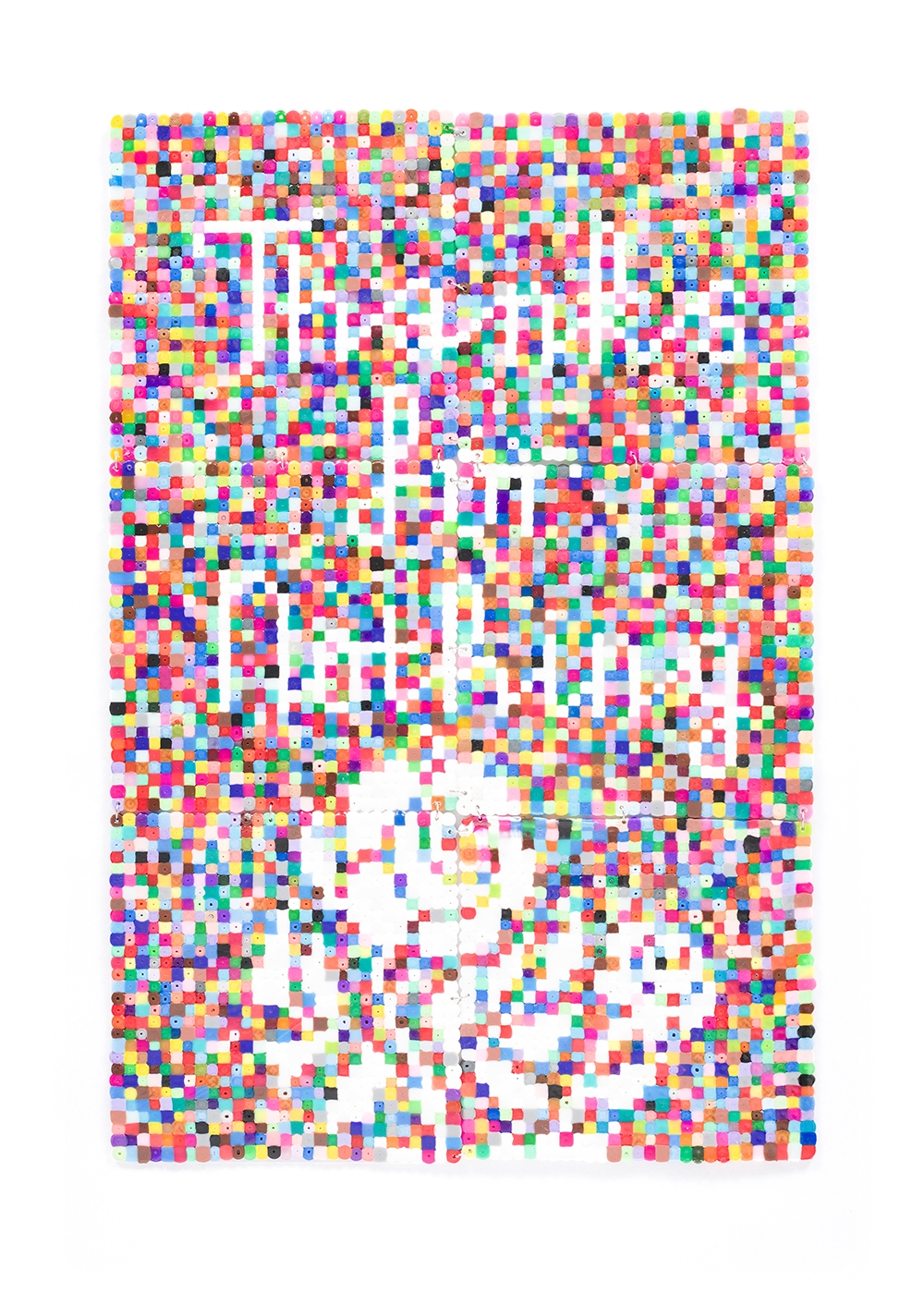
Thanks for Nothing, rainbow speckle with white 2024
Melty beads
43.5 x 28.5 cm
$680
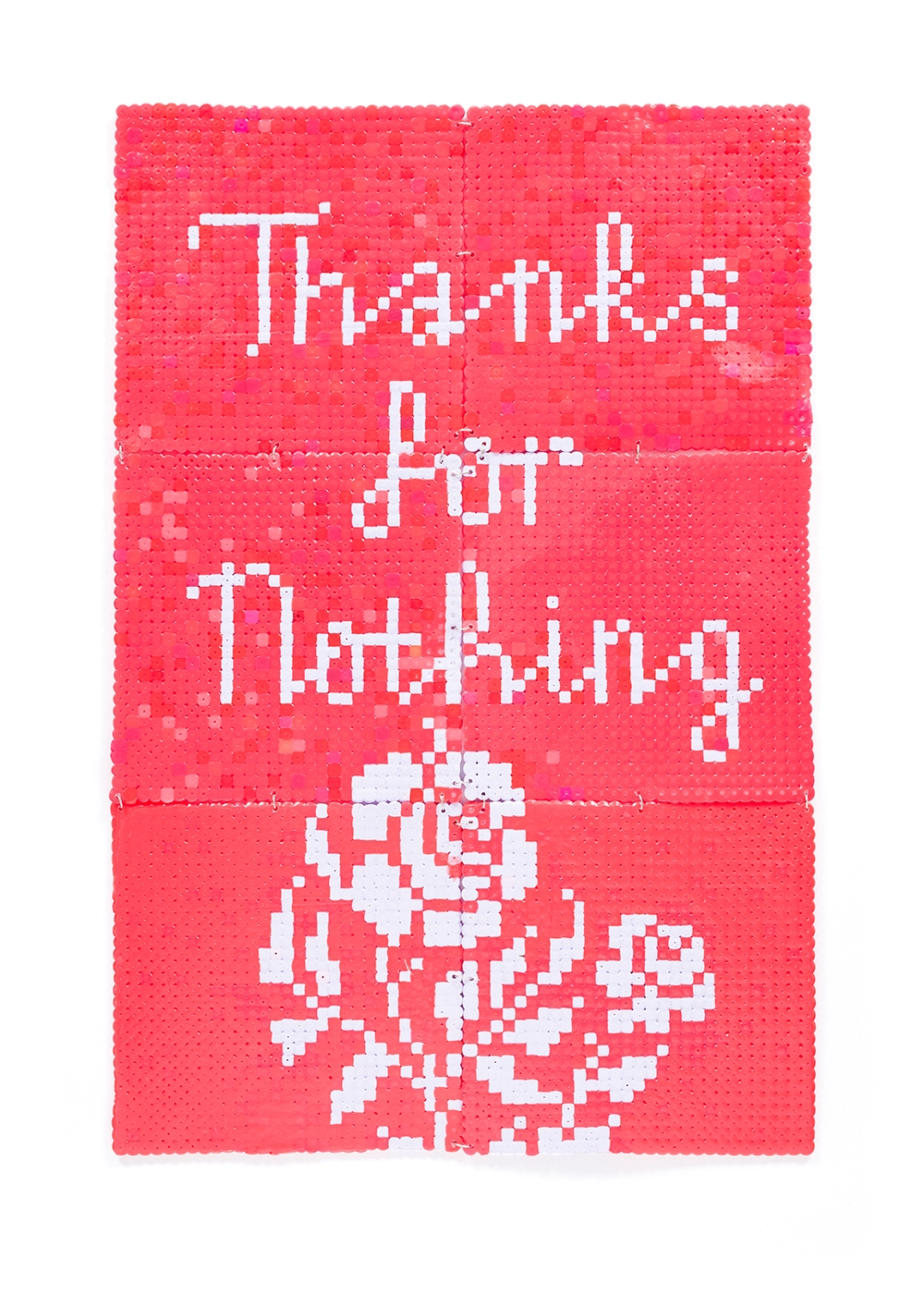
Thanks for Nothing, coral with white 2024
Melty beads
43.5 x 28.5 cm
$680
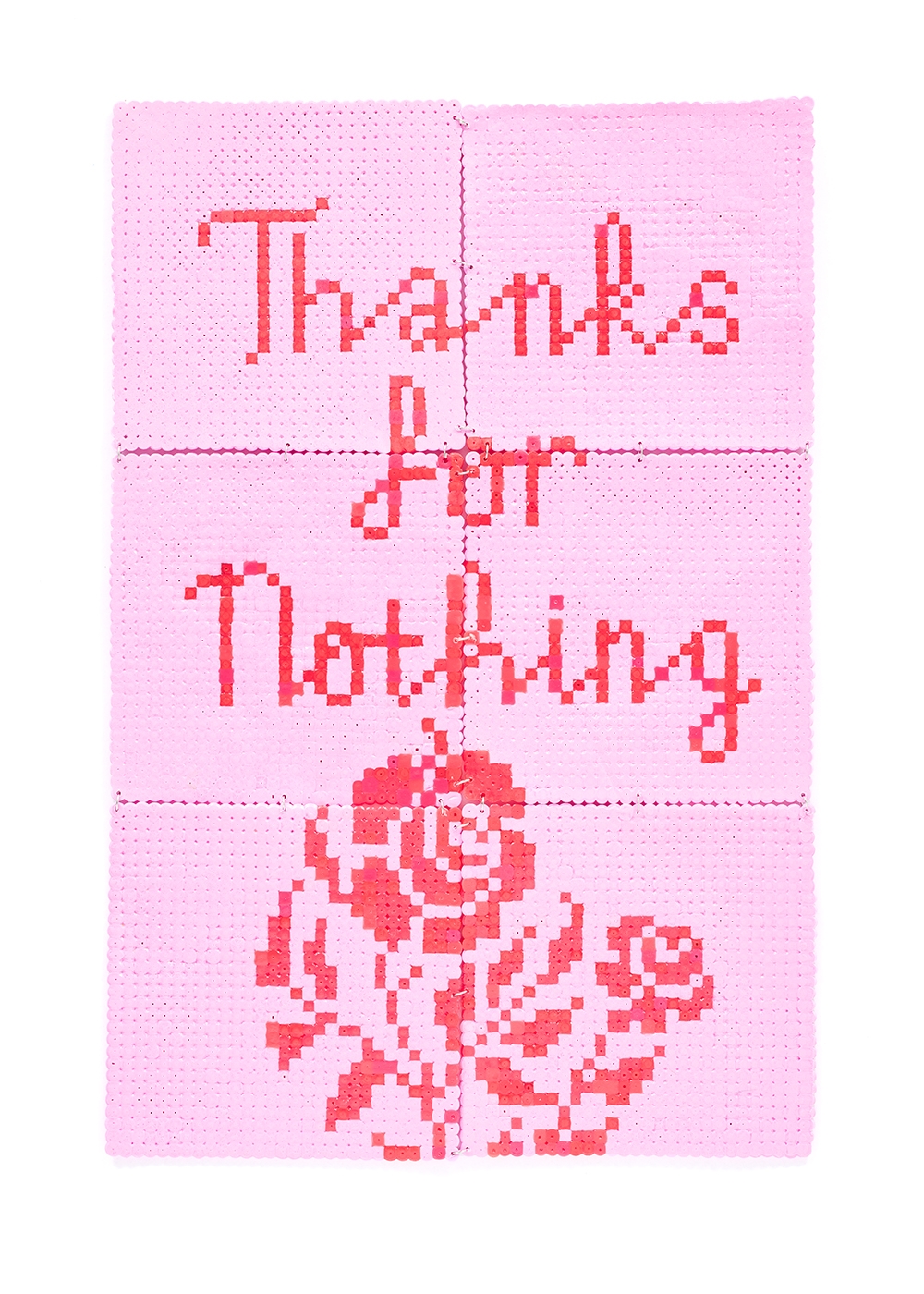 Sold
Sold
Thanks for Nothing, pink with red 2024
Melty beads
43.5 x 28.5 cm
$680 Sold
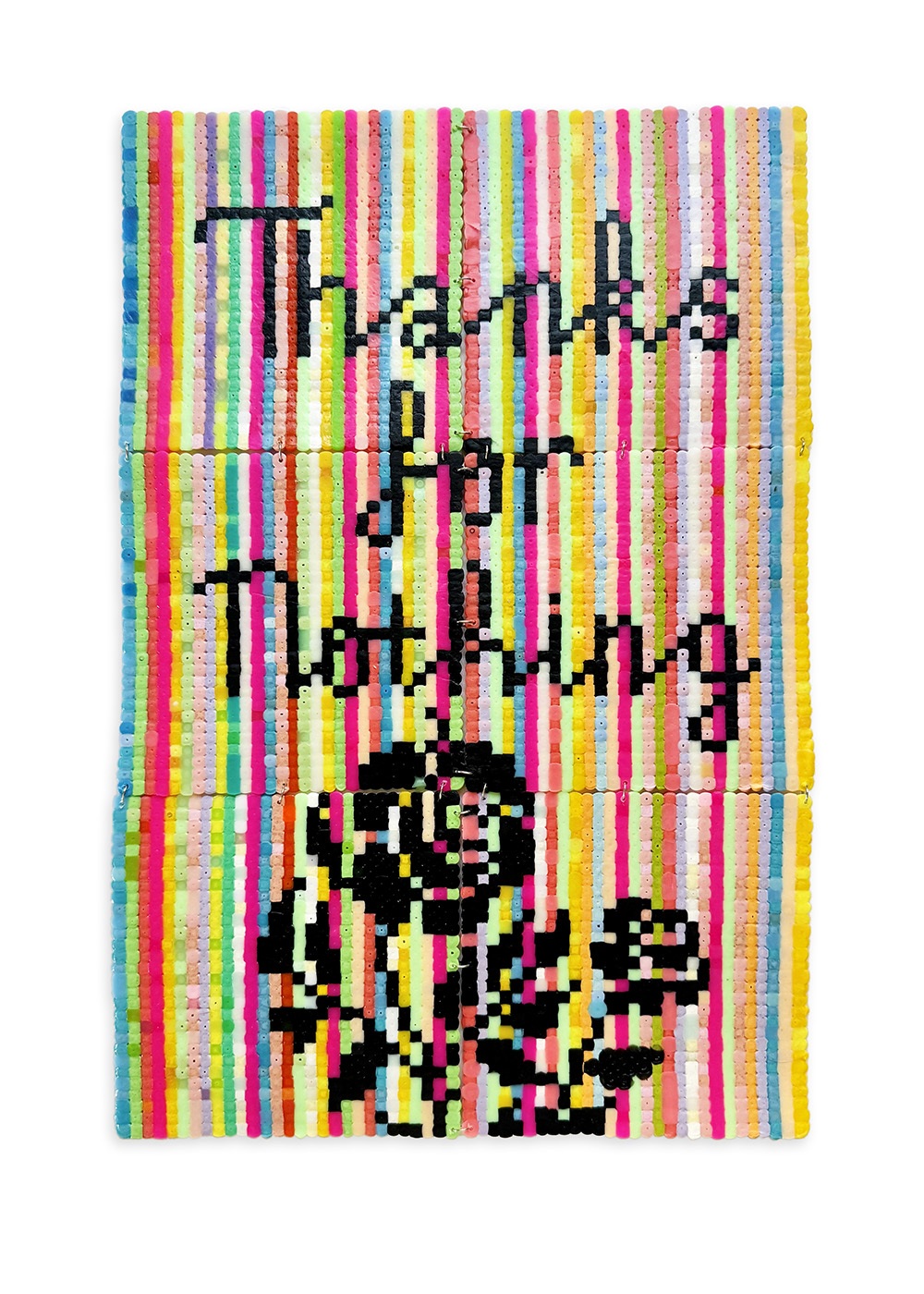
Thanks for Nothing, rainbow stripe with black 2025
Melty beads
43.5 x 28.5 cm
$680
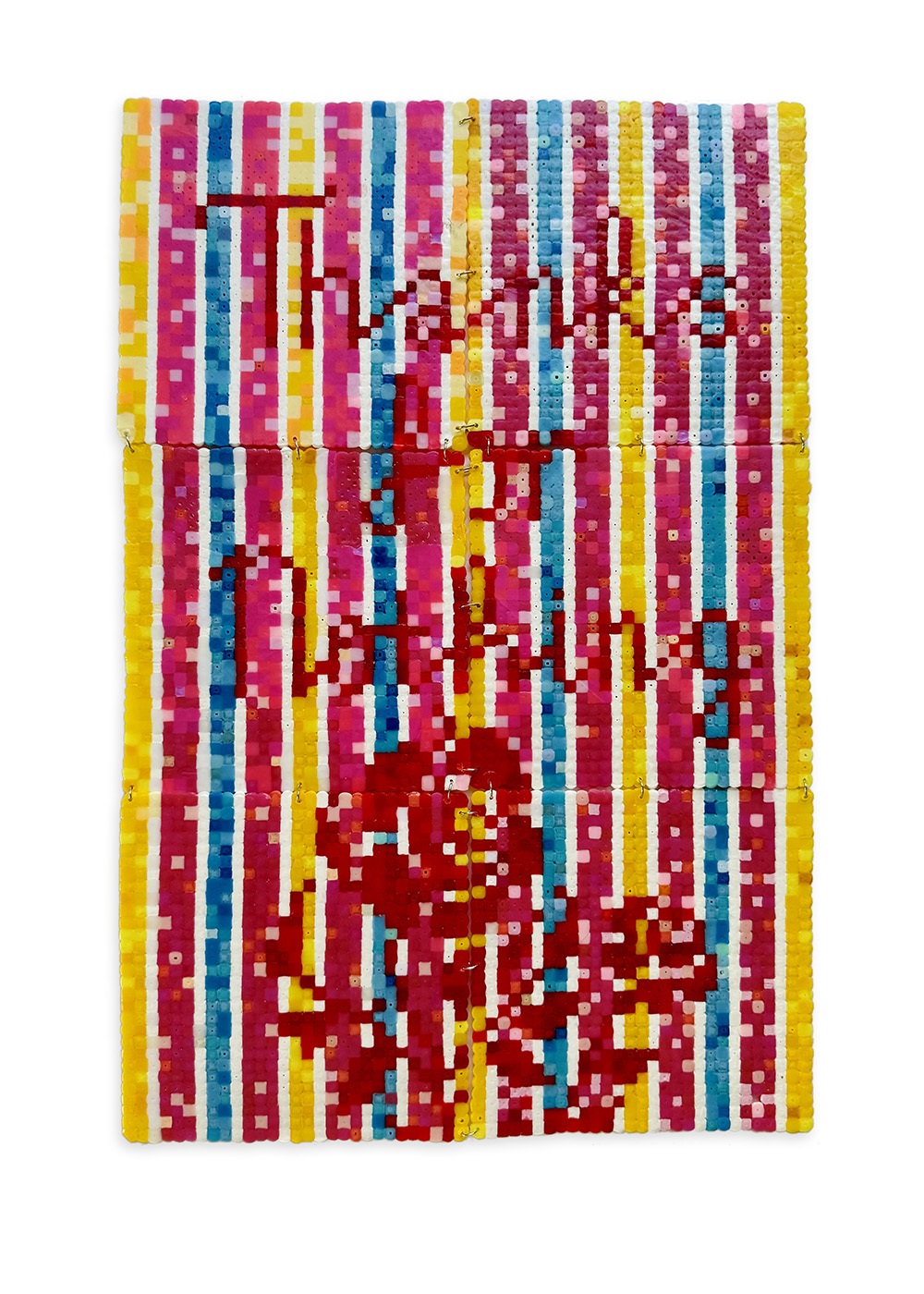
Thanks for Nothing, mater stripe with red 2025
Melty beads
43.5 x 28.5 cm
$680
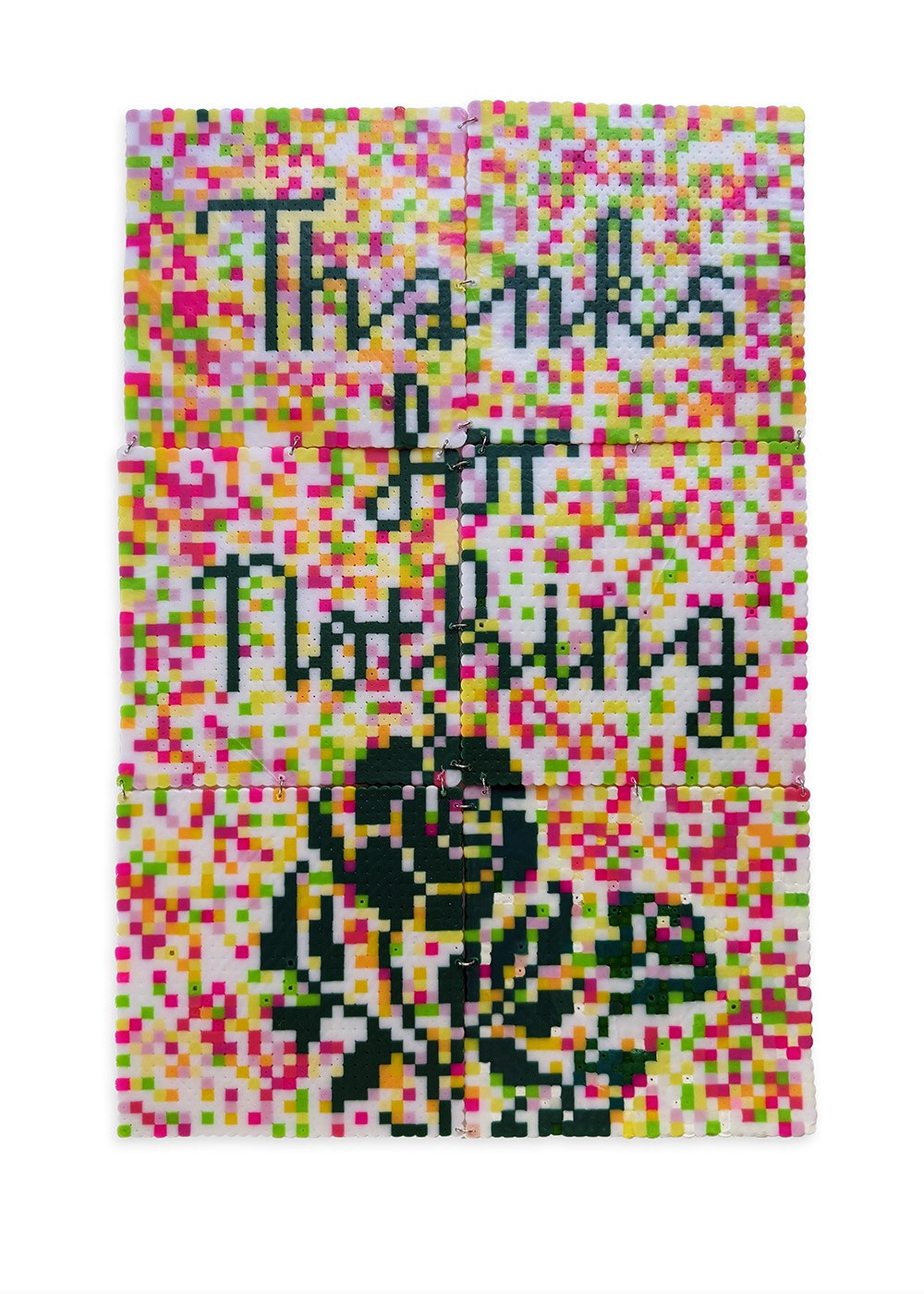
Thanks for Nothing, speckle with dark green 2025
Melty beads
43.5 x 28.5 cm
$680
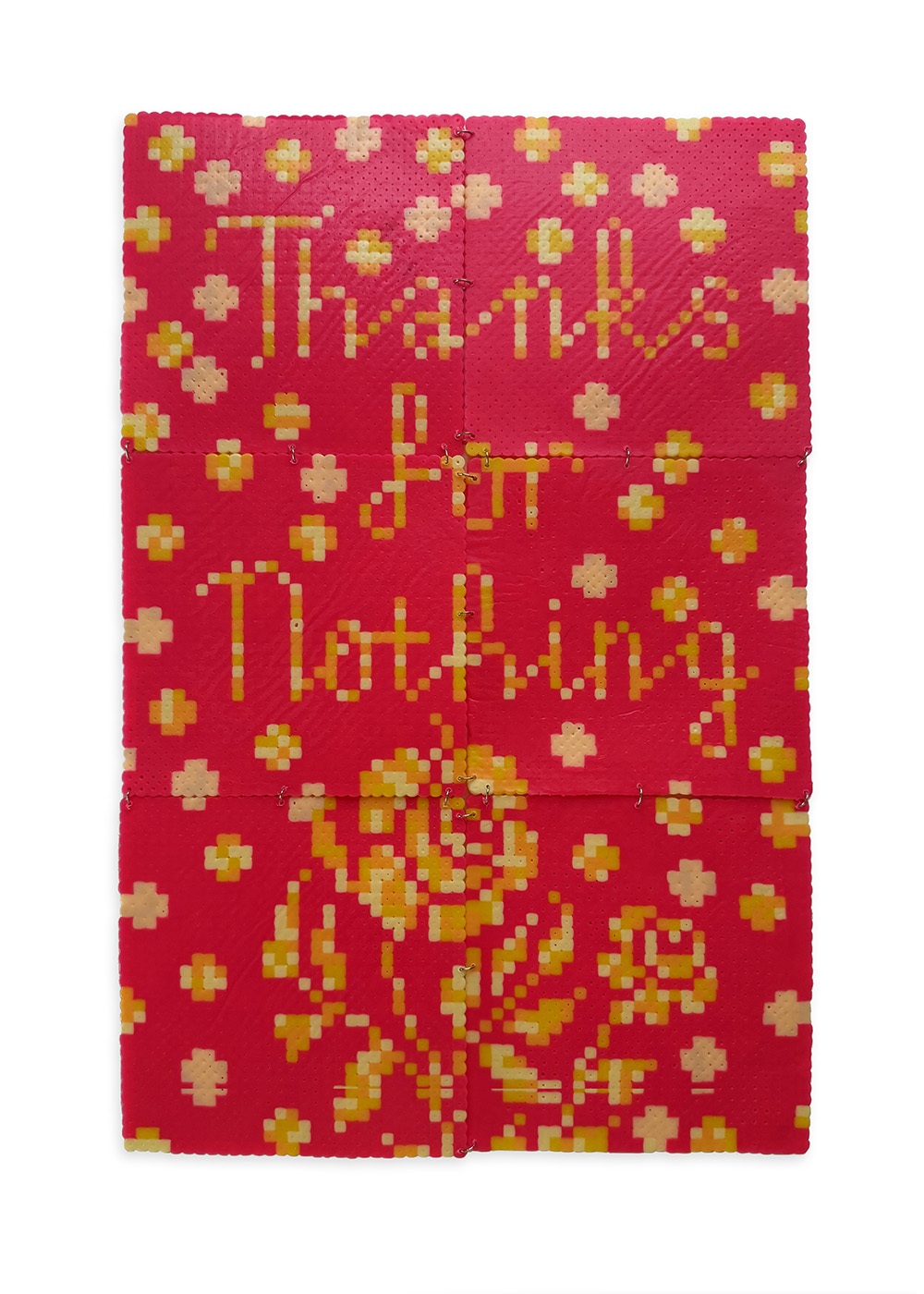
Thanks for Nothing, confetti with yellow 2025
Melty beads
43.5 x 28.5 cm
$680
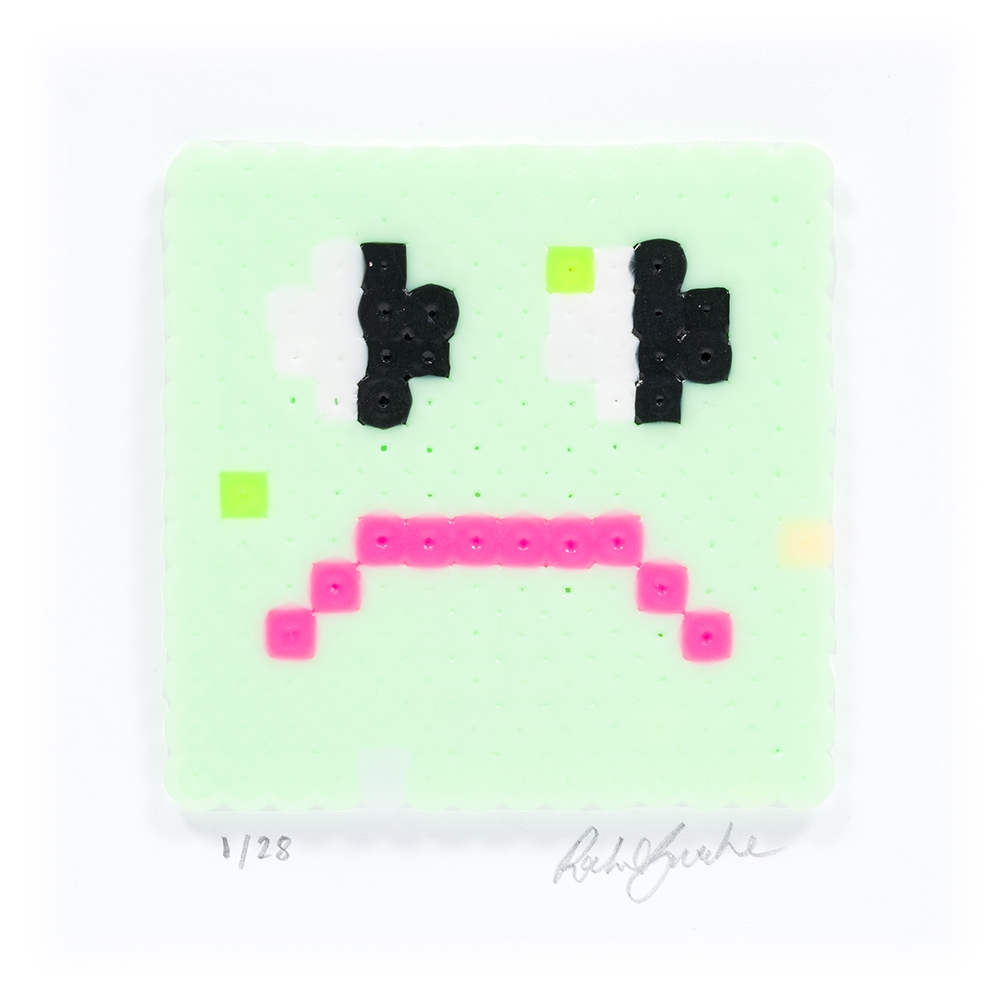 Sold
Sold
The many faces of No.1 2024
Melty beads
7 x 7 cm
$120 Sold
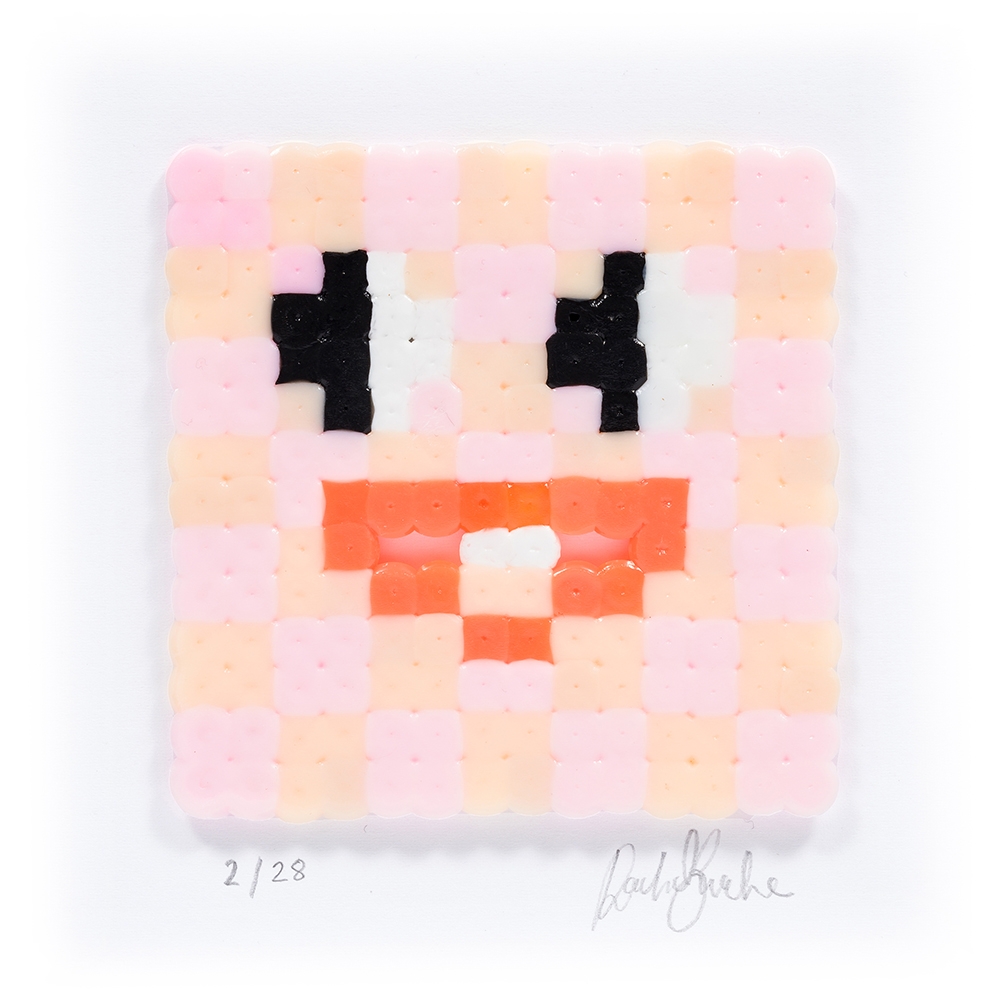 Sold
Sold
The many faces of No.2 2024
Melty beads
7 x 7 cm
$120 Sold
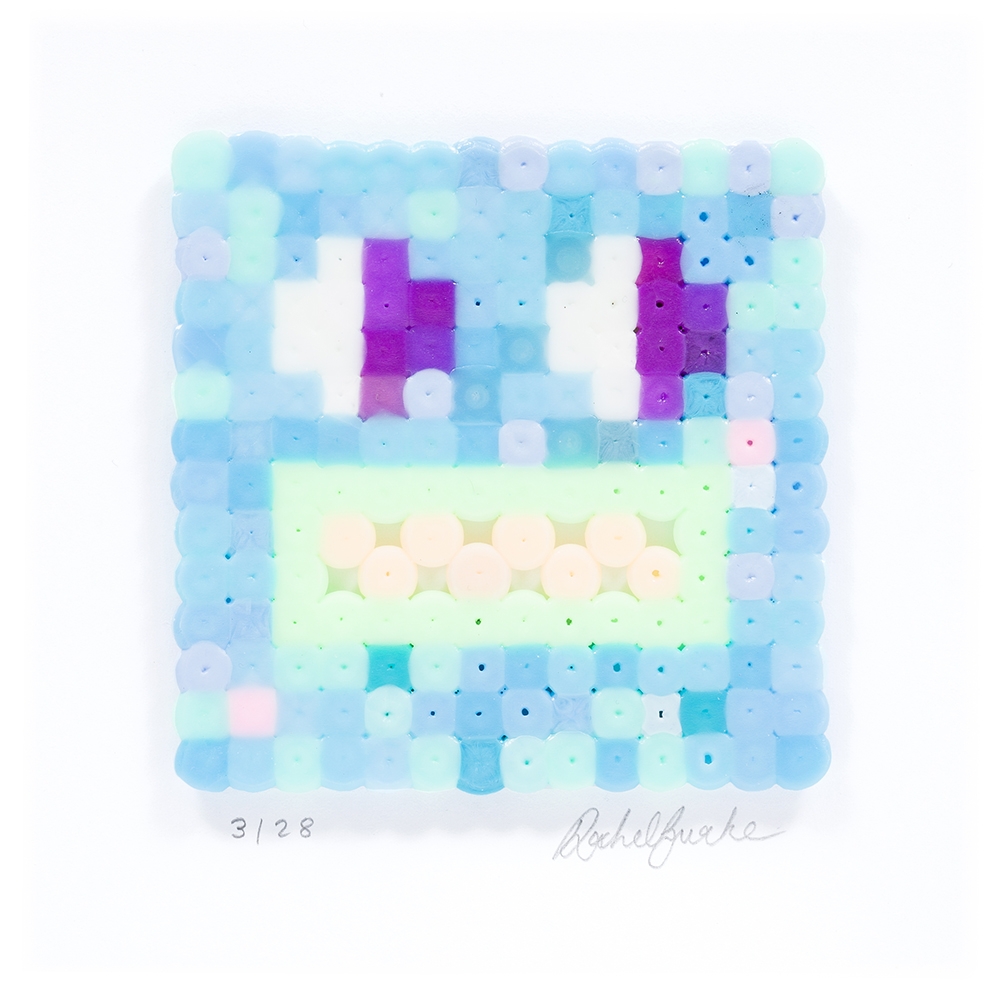 Sold
Sold
The many faces of No.3 2024
Melty beads
7 x 7 cm
$120 Sold
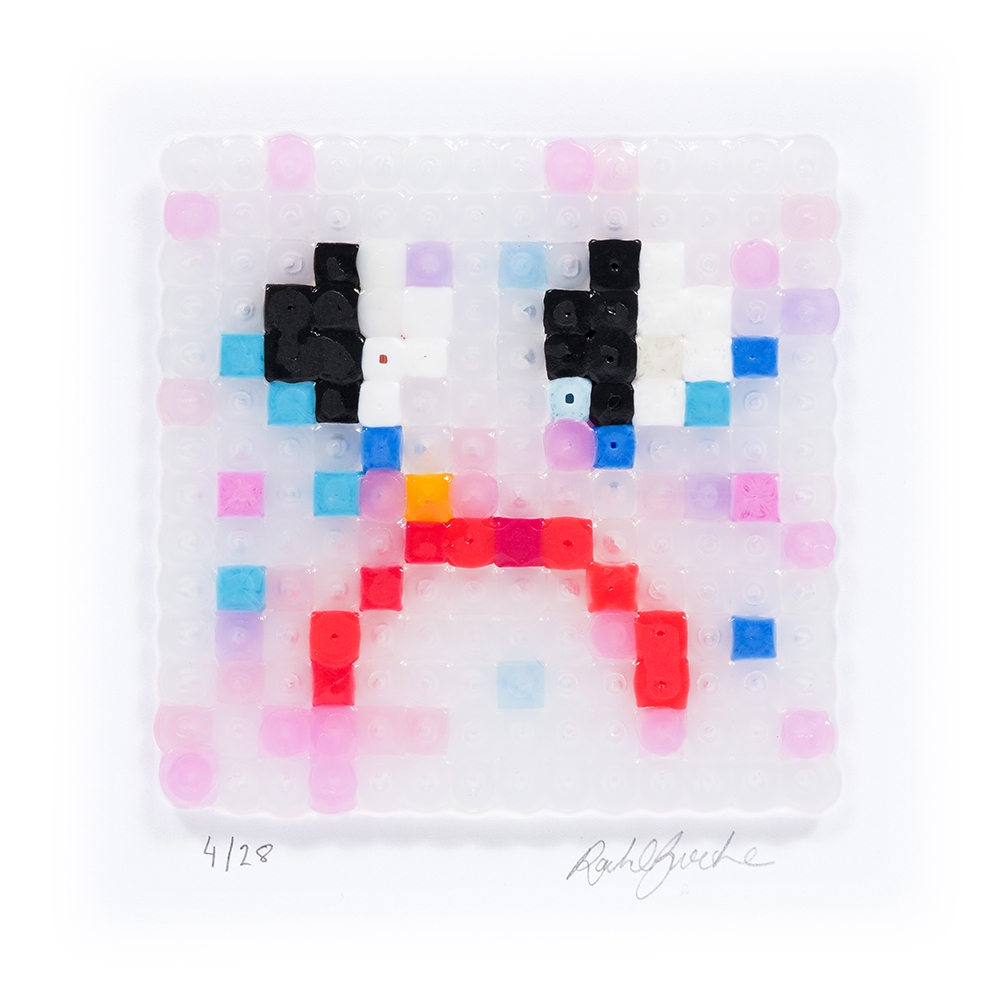 Sold
Sold
The many faces of No.4 2024
Melty beads
7 x 7 cm
$120 Sold
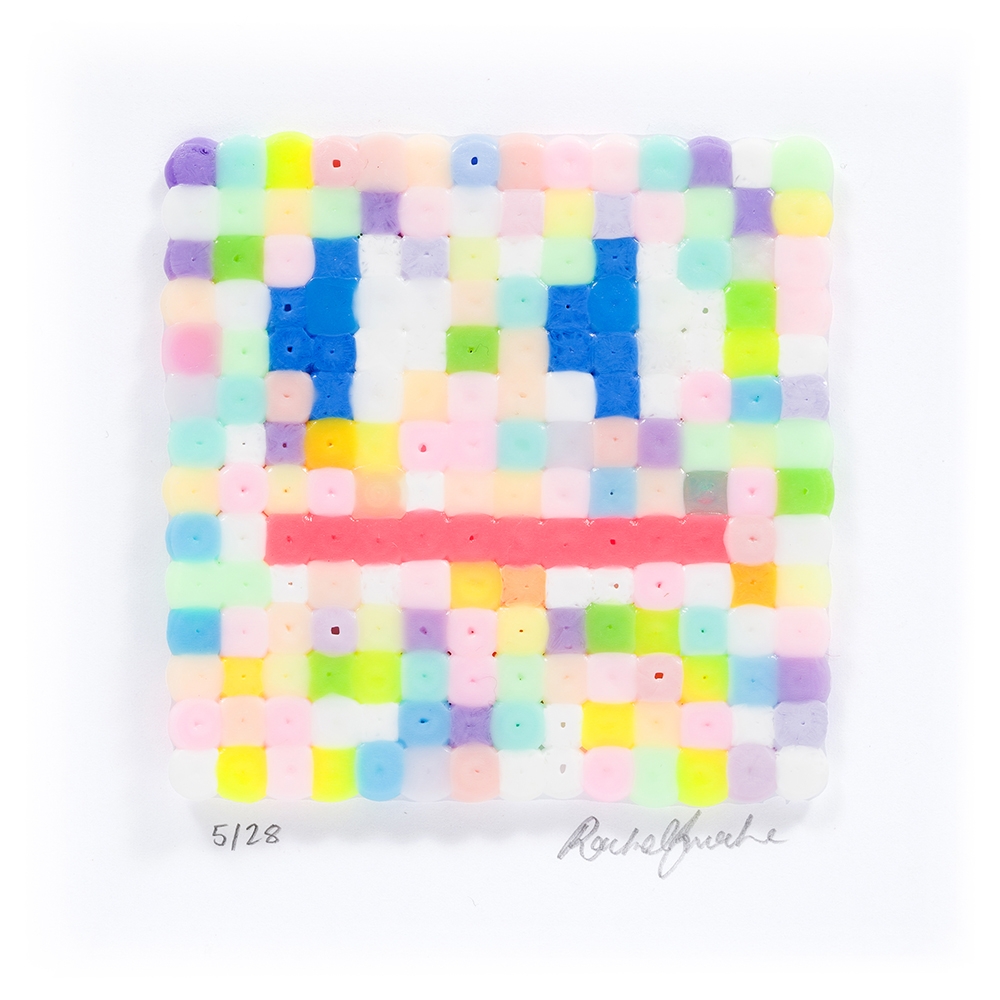 Sold
Sold
The many faces of No.5 2024
Melty beads
7 x 7 cm
$120 Sold
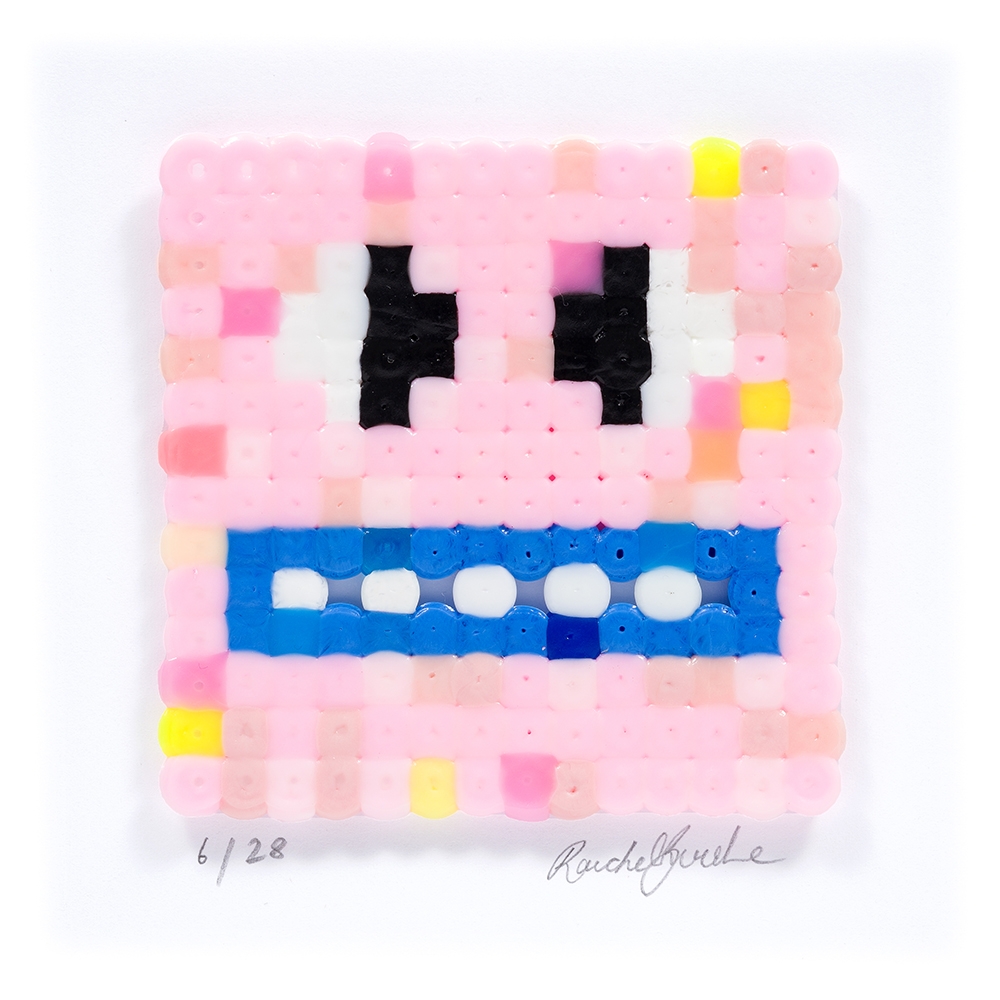 Sold
Sold
The many faces of No.6 2024
Melty beads
7 x 7 cm
$120 Sold
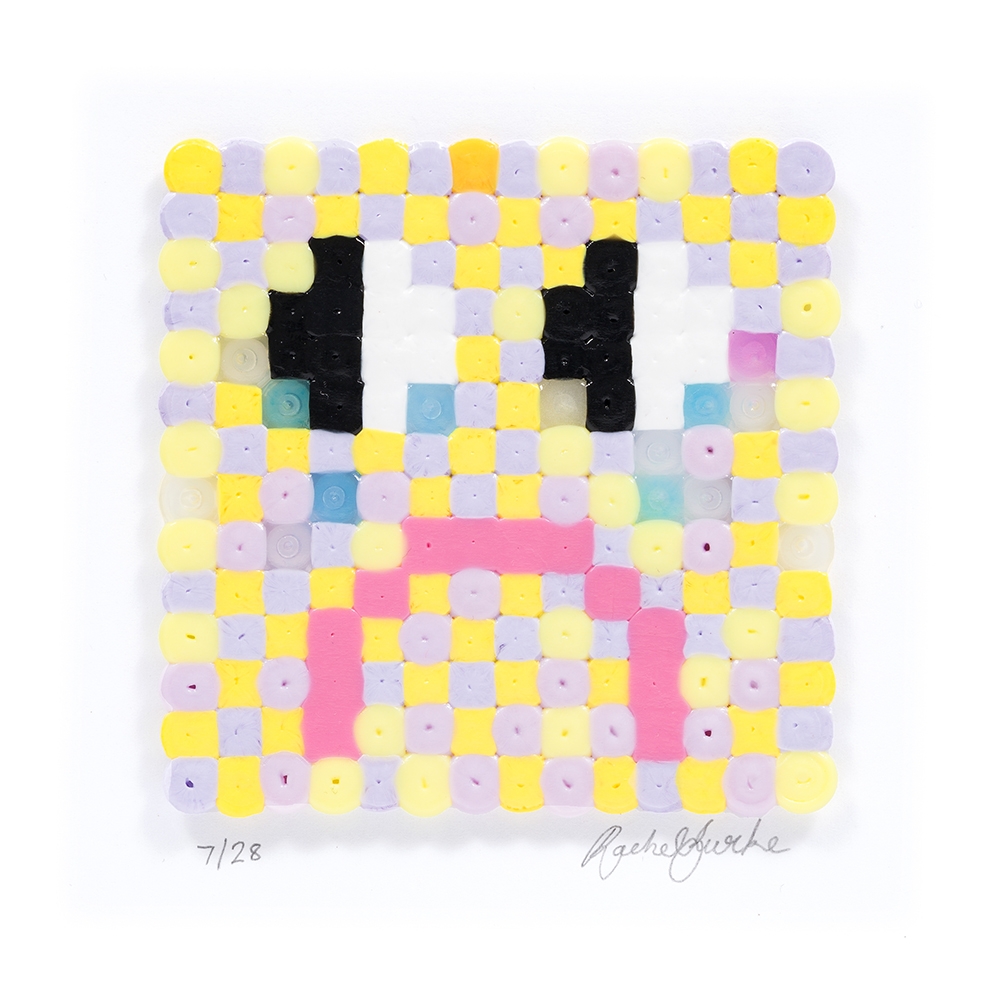 Sold
Sold
The many faces of No.7 2024
Melty beads
7 x 7 cm
$120 Sold
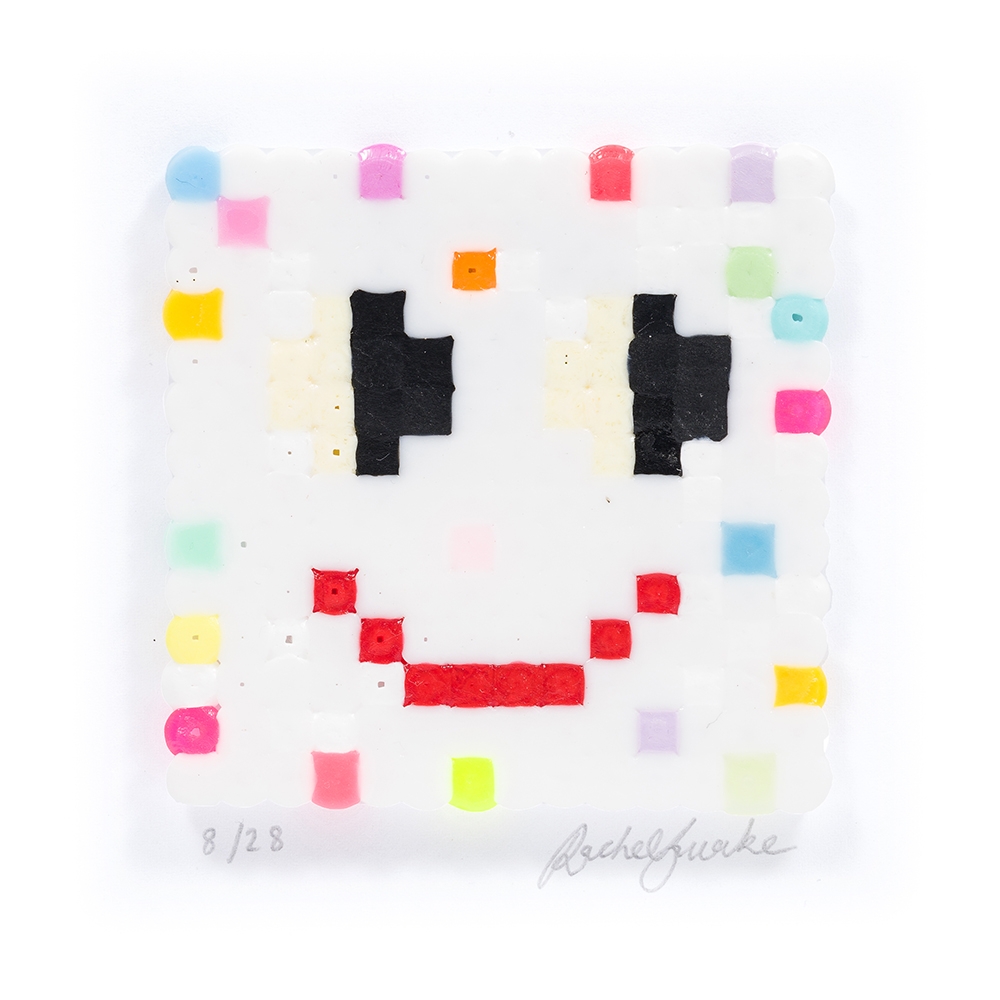 Sold
Sold
The many faces of No.8 2024
Melty beads
7 x 7 cm
$120 Sold
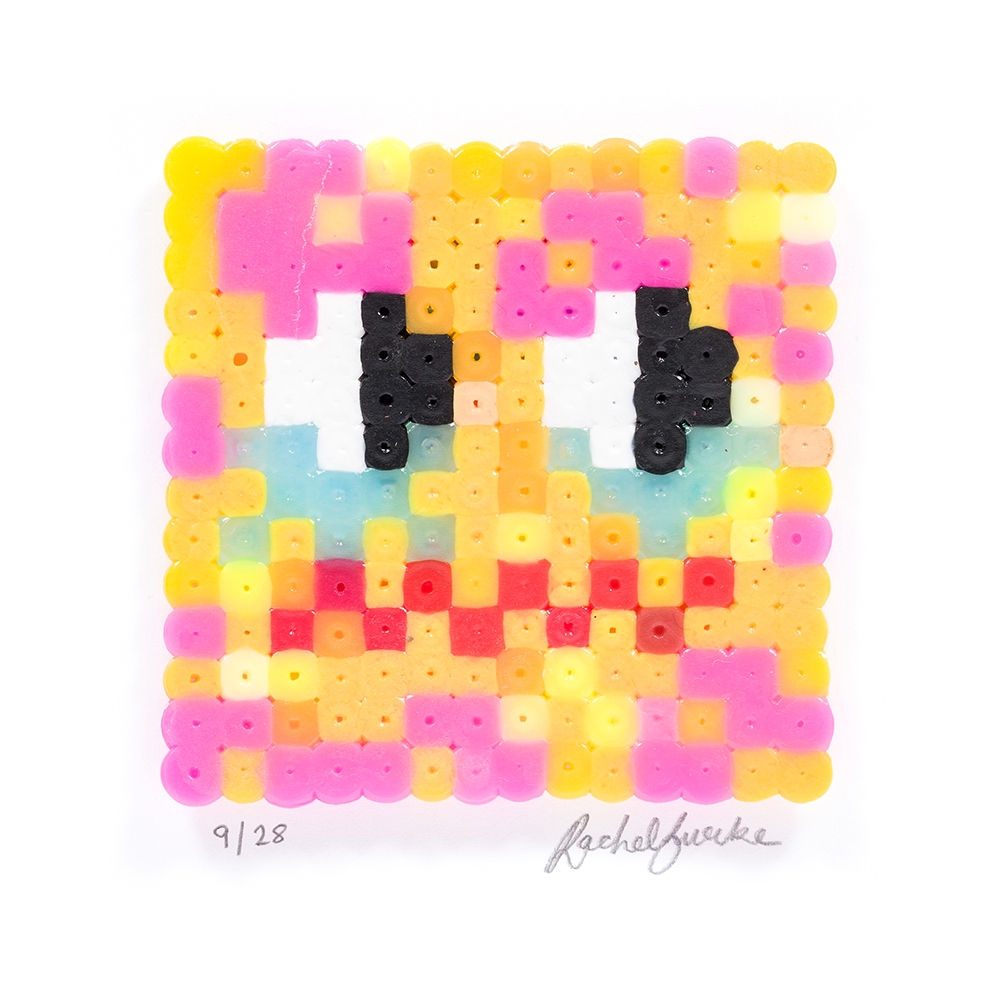 Sold
Sold
The many faces of No.9 2024
Melty beads
7 x 7 cm
$120 Sold
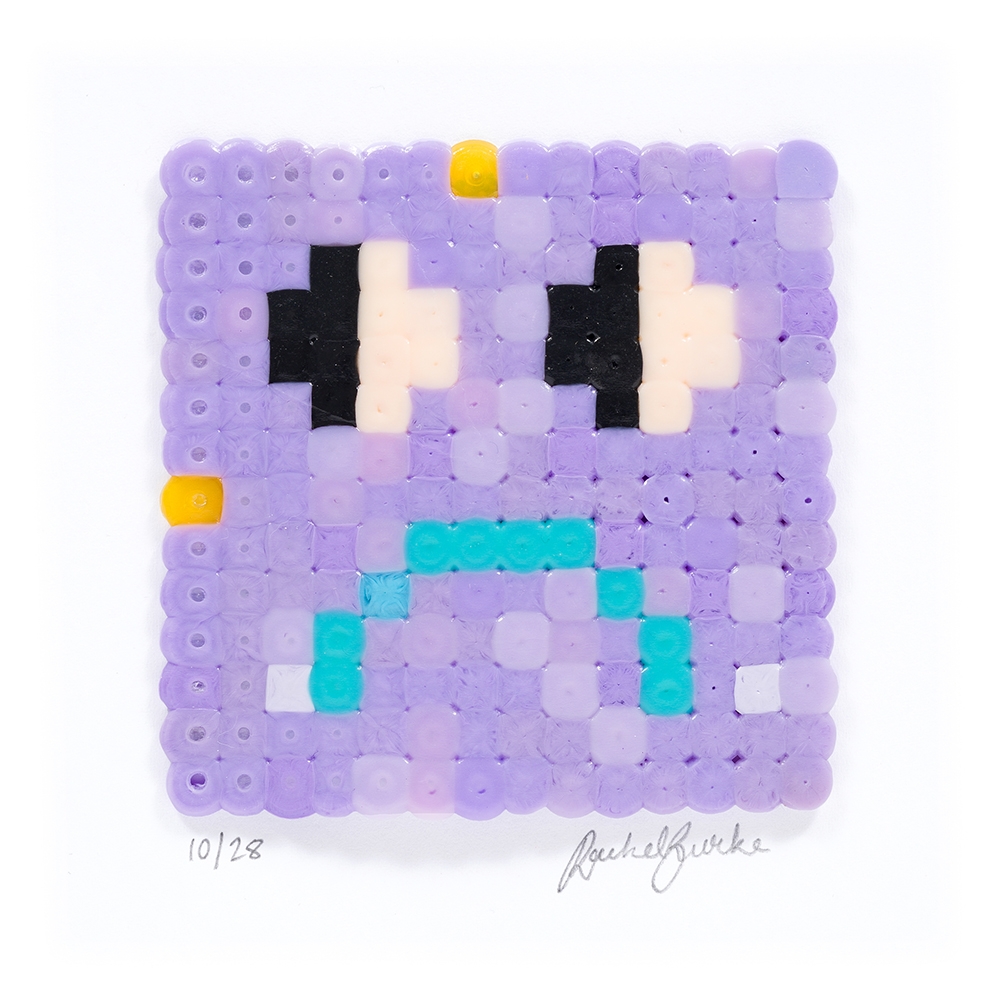 Sold
Sold
The many faces of No.10 2024
Melty beads
7 x 7 cm
$120 Sold
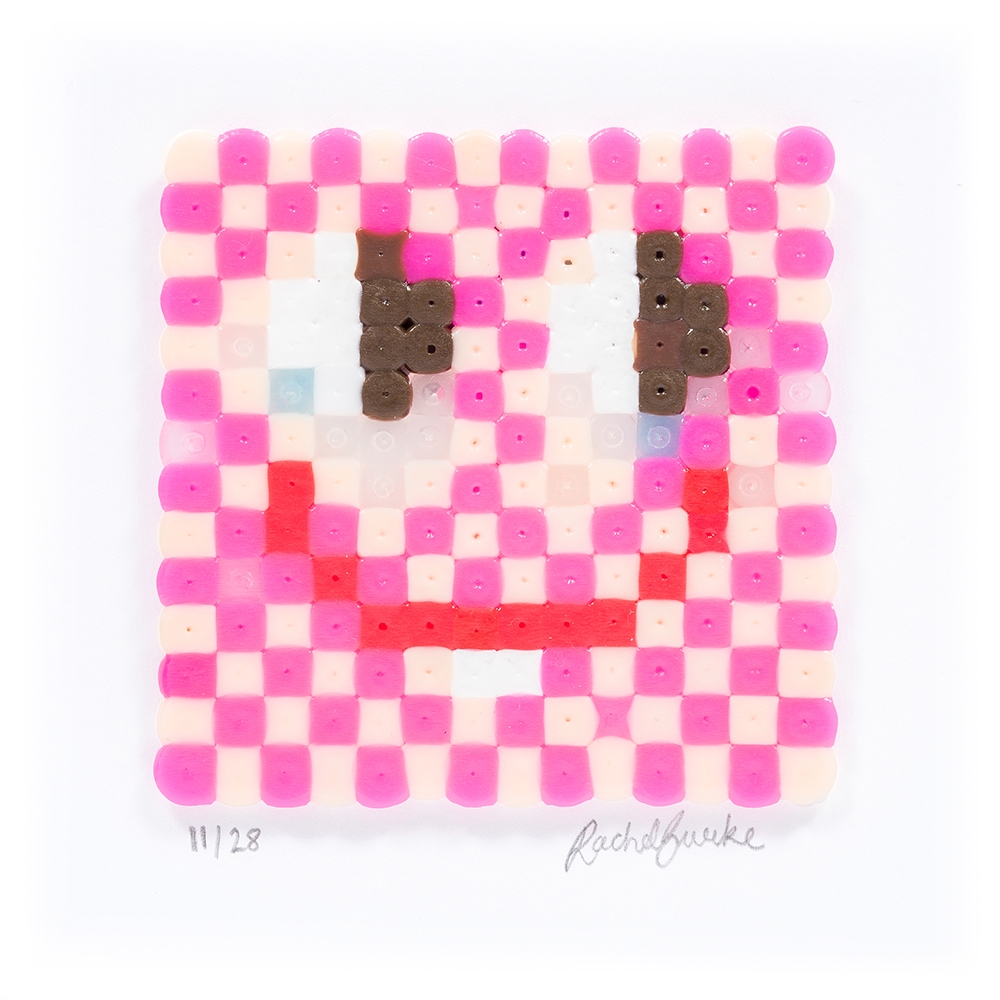 Sold
Sold
The many faces of No.11 2024
Melty beads
7 x 7 cm
$120 Sold
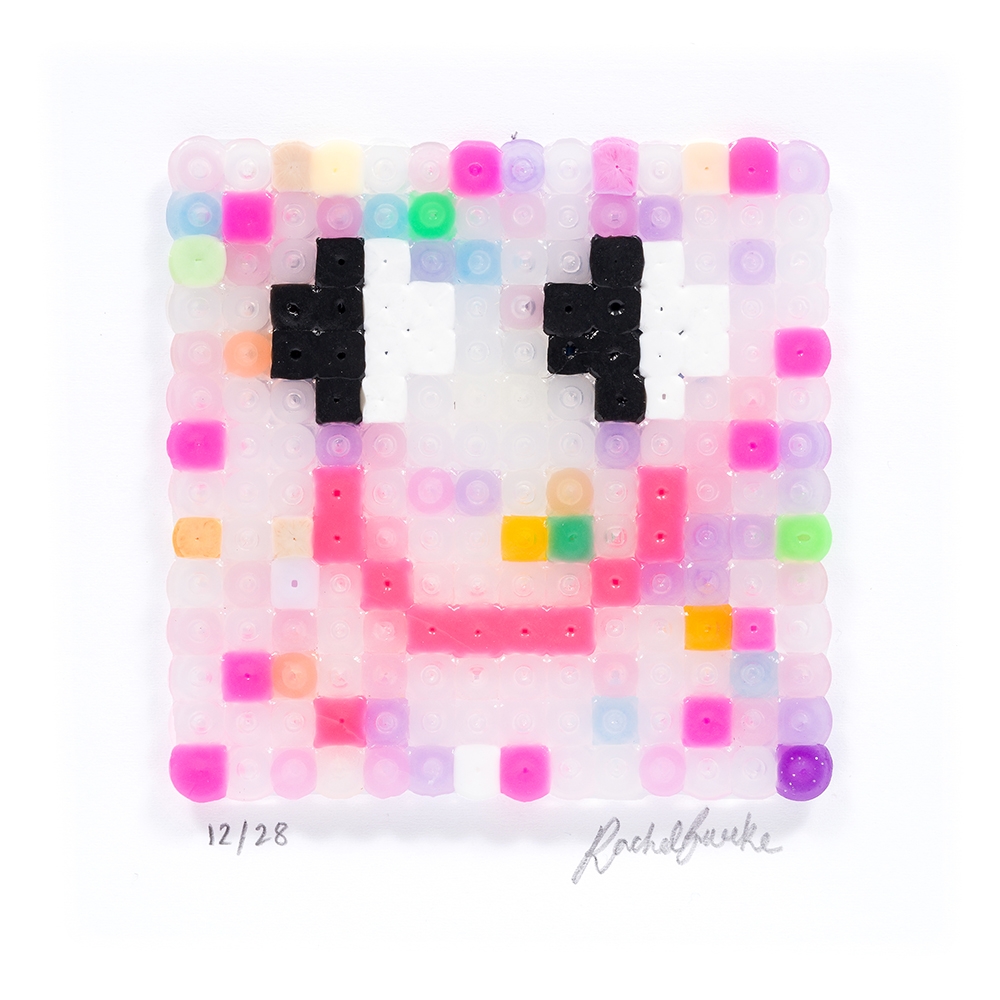 Sold
Sold
The many faces of No.12 2024
Melty beads
7 x 7 cm
$120 Sold
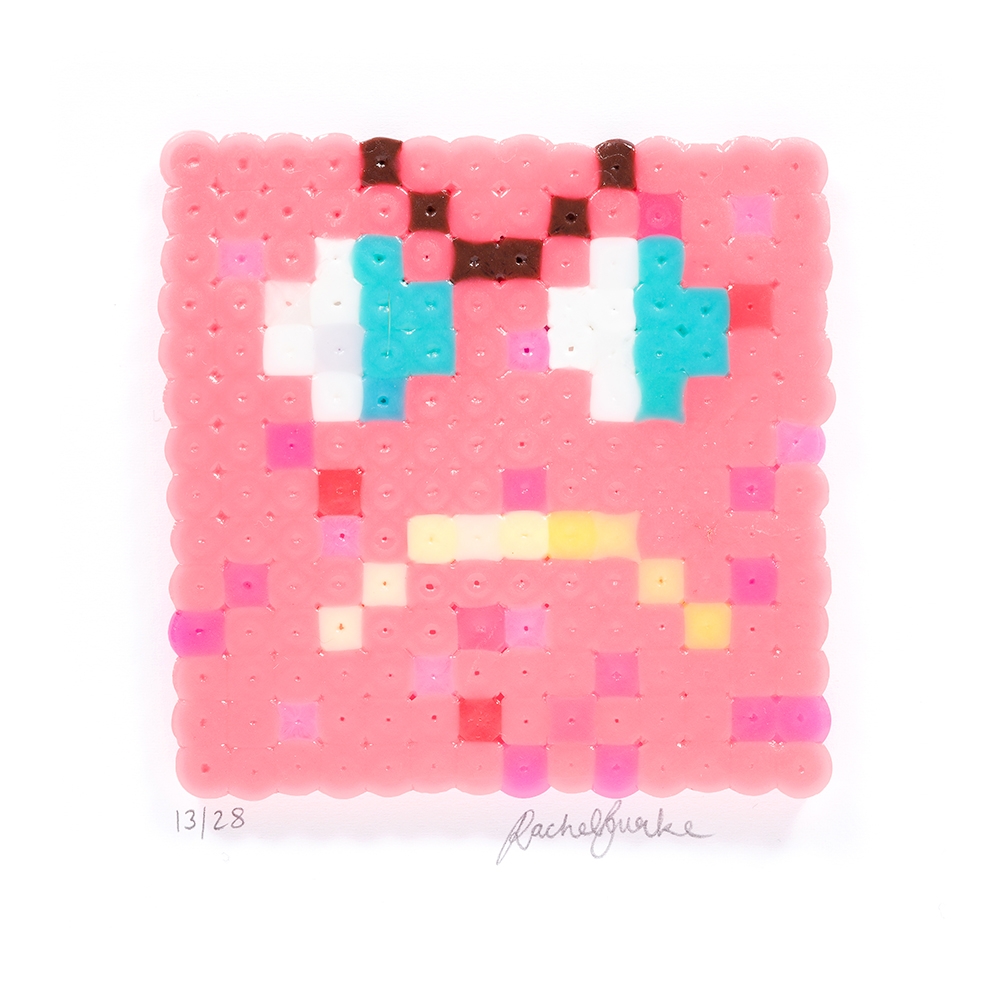 Sold
Sold
The many faces of No.13 2024
Melty beads
7 x 7 cm
$120 Sold
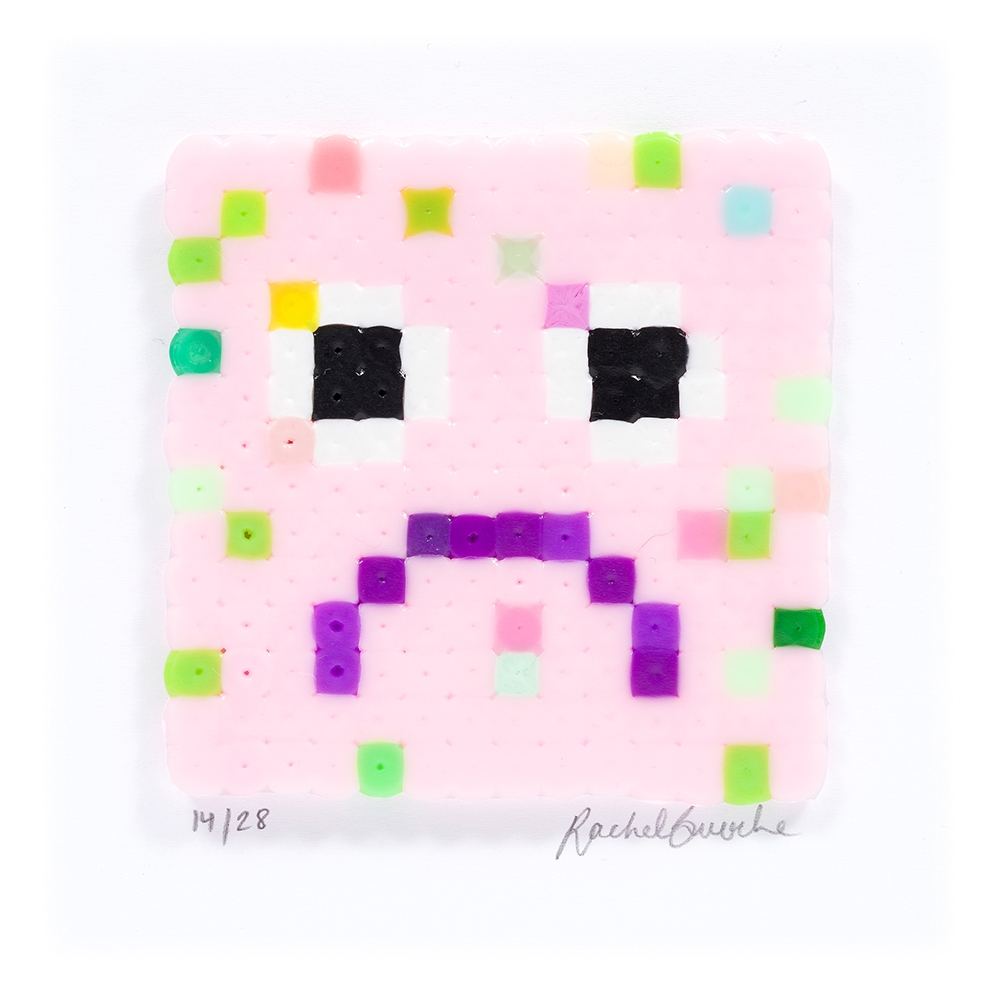 Sold
Sold
The many faces of No.14 2024
Melty beads
7 x 7 cm
$120 Sold
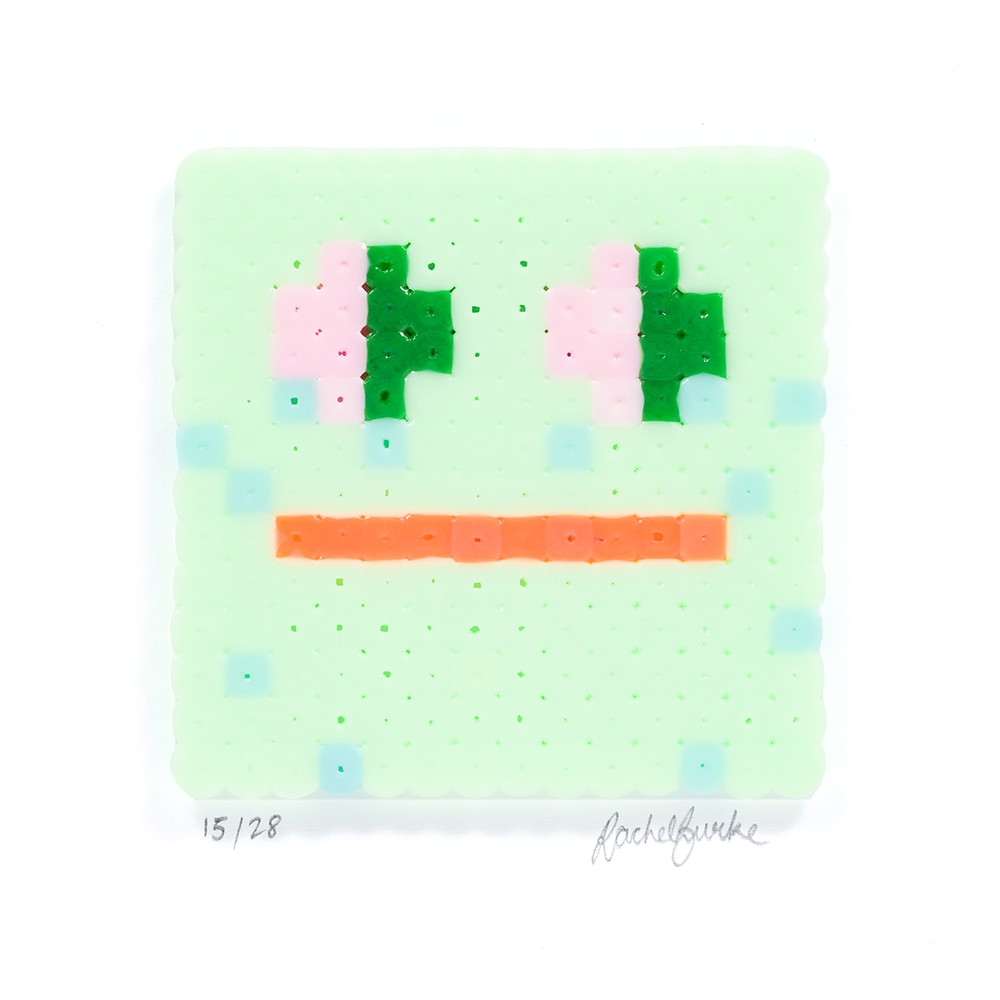 Sold
Sold
The many faces of No.15 2024
Melty beads
7 x 7 cm
$120 Sold
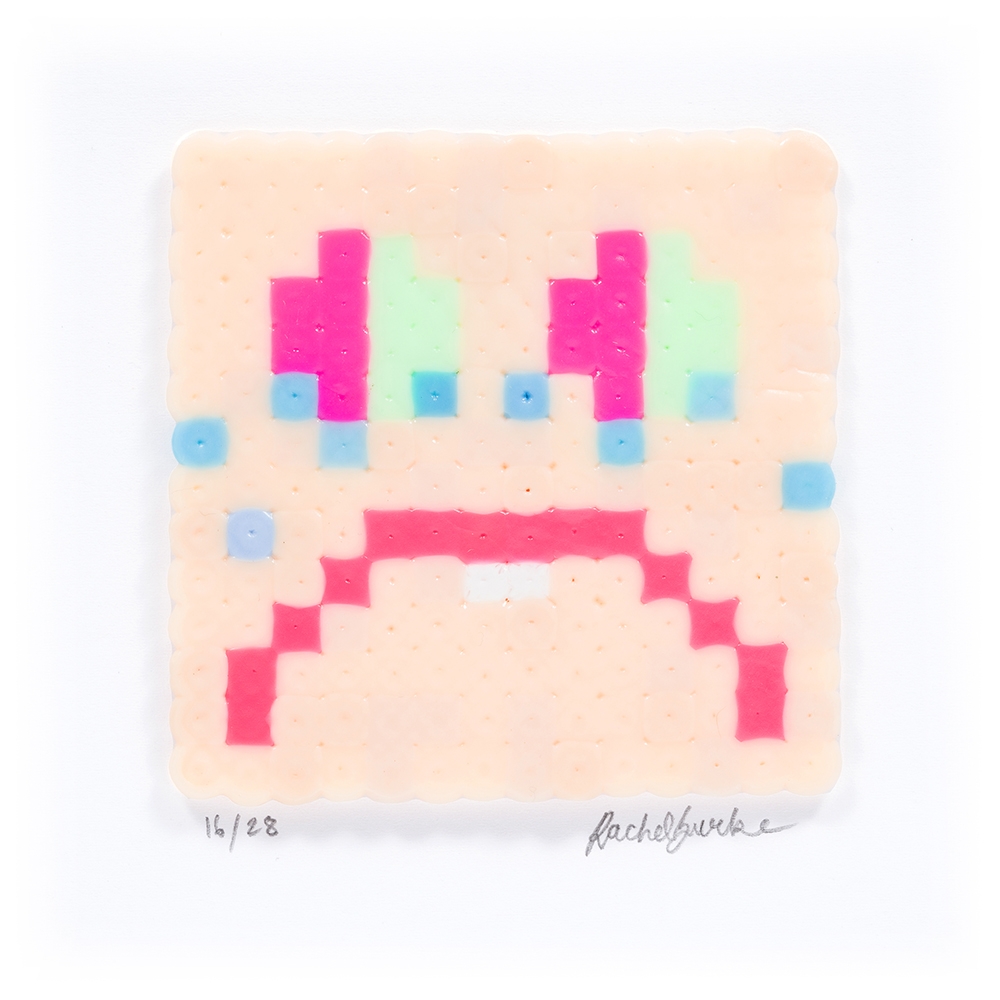 Sold
Sold
The many faces of No.16 2024
Melty beads
7 x 7 cm
$120 Sold
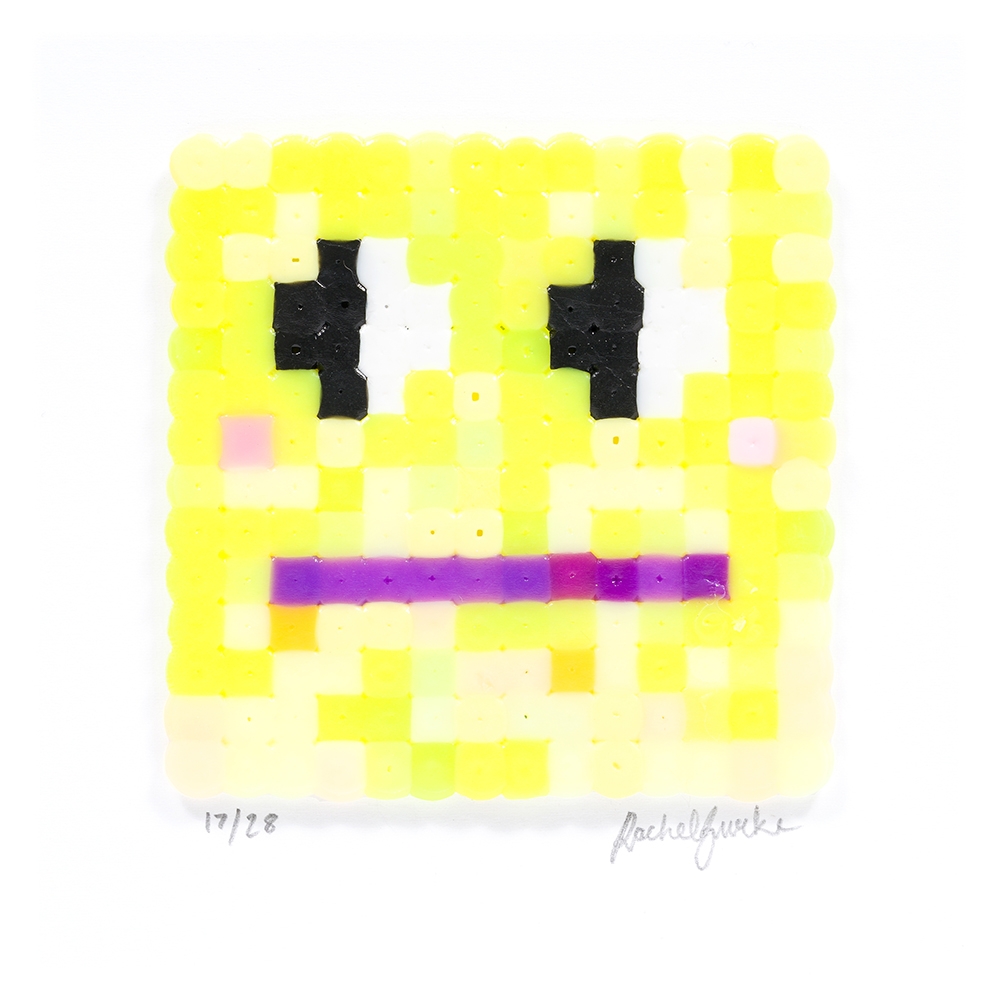 Sold
Sold
The many faces of No.17 2024
Melty beads
7 x 7 cm
$120 Sold
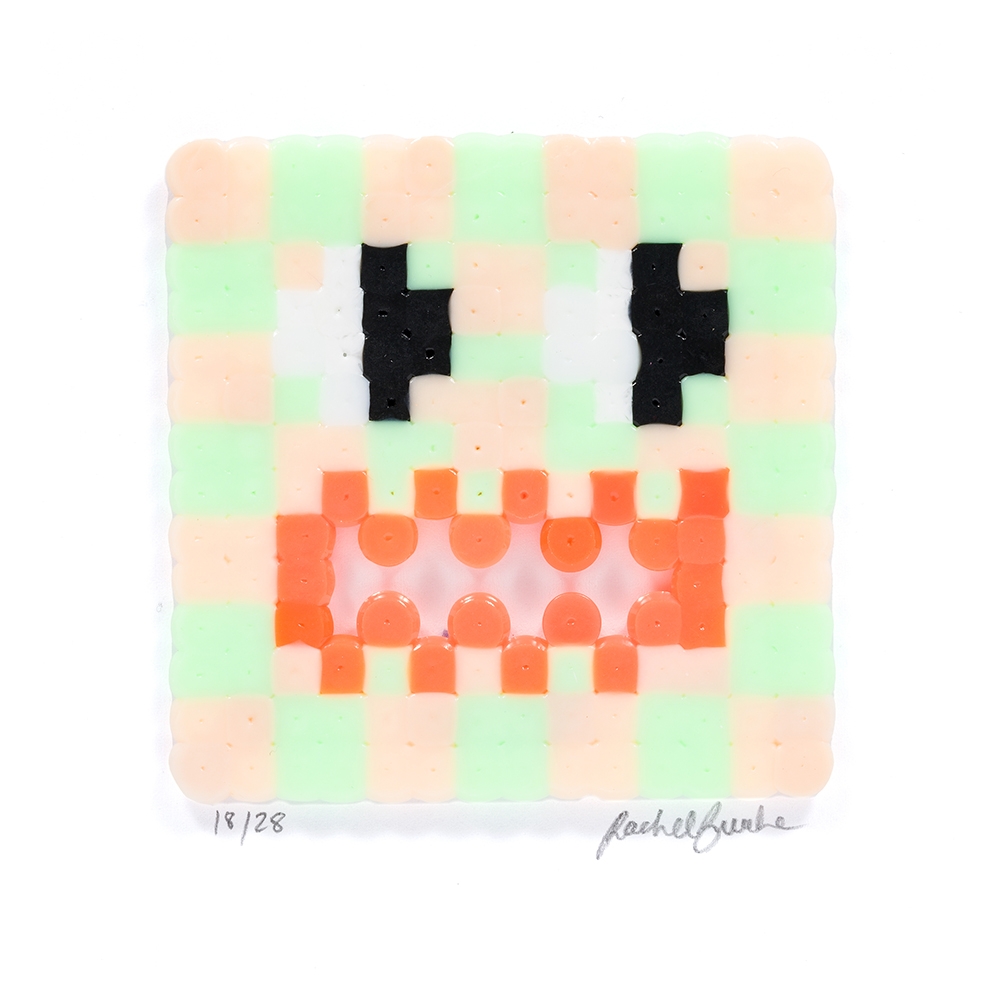 Sold
Sold
The many faces of No.18 2024
Melty beads
7 x 7 cm
$120 Sold
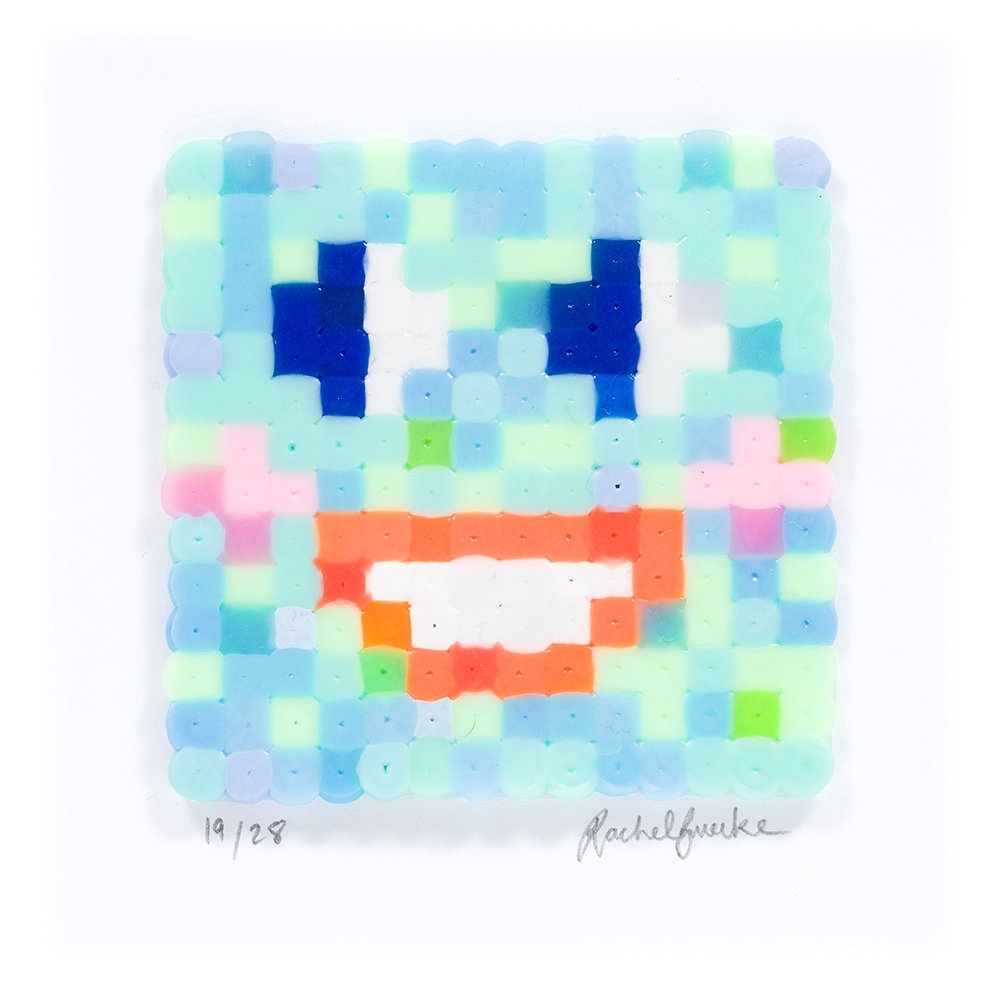 Sold
Sold
The many faces of No.19 2024
Melty beads
7 x 7 cm
$120 Sold
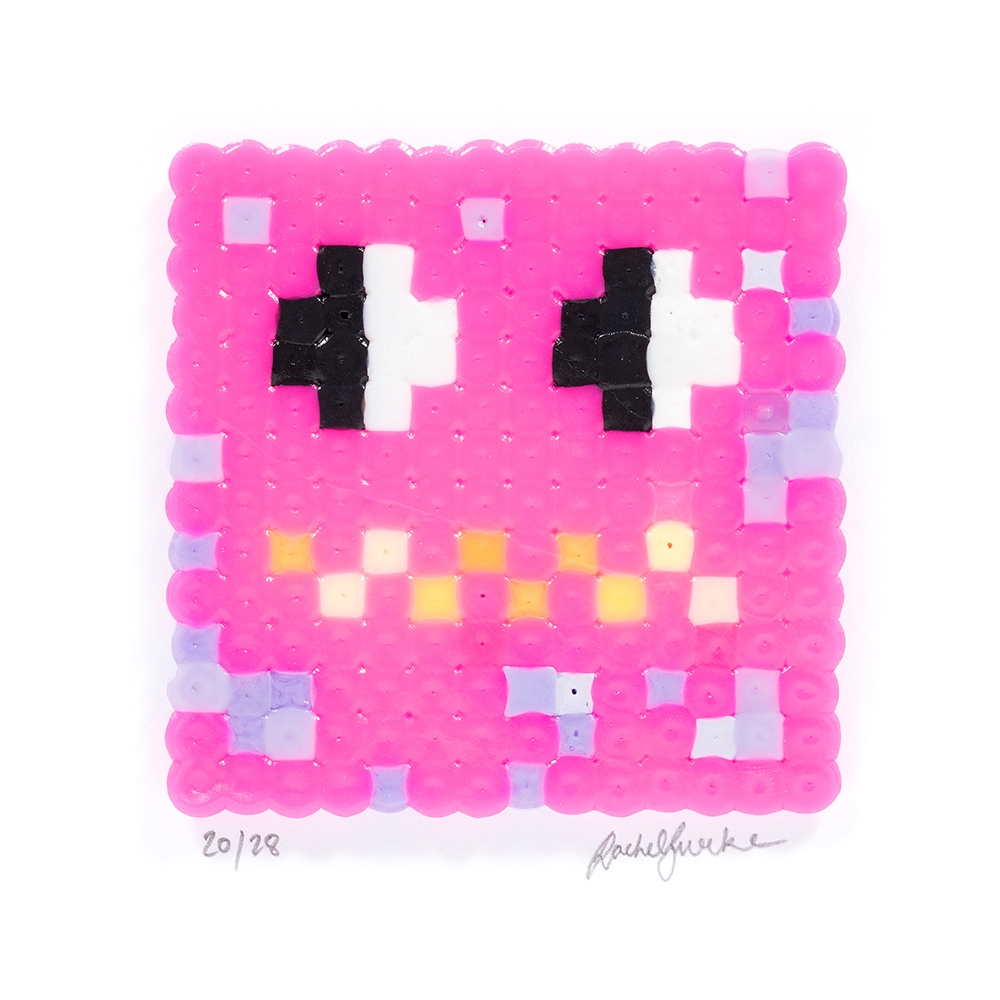 Sold
Sold
The many faces of No.20 2024
Melty beads
7 x 7 cm
$120 Sold
 Sold
Sold
The many faces of No.21 2025
Melty beads
7 x 7 cm
$120 Sold
 Sold
Sold
The many faces of No.22 2025
Melty beads
7 x 7 cm
$120 Sold
 Sold
Sold
The many faces of No.23 2025
Melty beads
7 x 7 cm
$120 Sold
 Sold
Sold
The many faces of No.24 2025
Melty beads
7 x 7 cm
$120 Sold
 Sold
Sold
The many faces of No.25 2025
Melty beads
7 x 7 cm
$120 Sold

The many faces of No.26 2025
Melty beads
7 x 7 cm
$120
 Sold
Sold
The many faces of No.27 2025
Melty beads
7 x 7 cm
$120 Sold
 Sold
Sold
The many faces of No.28 2025
Melty beads
7 x 7 cm
$120 Sold
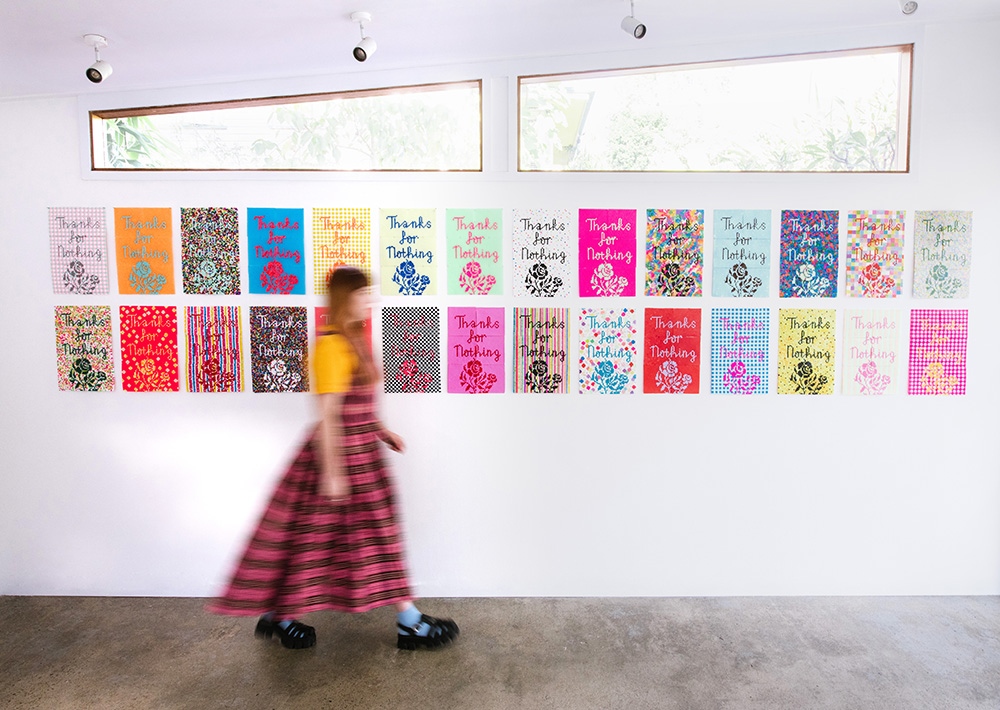
Install view


